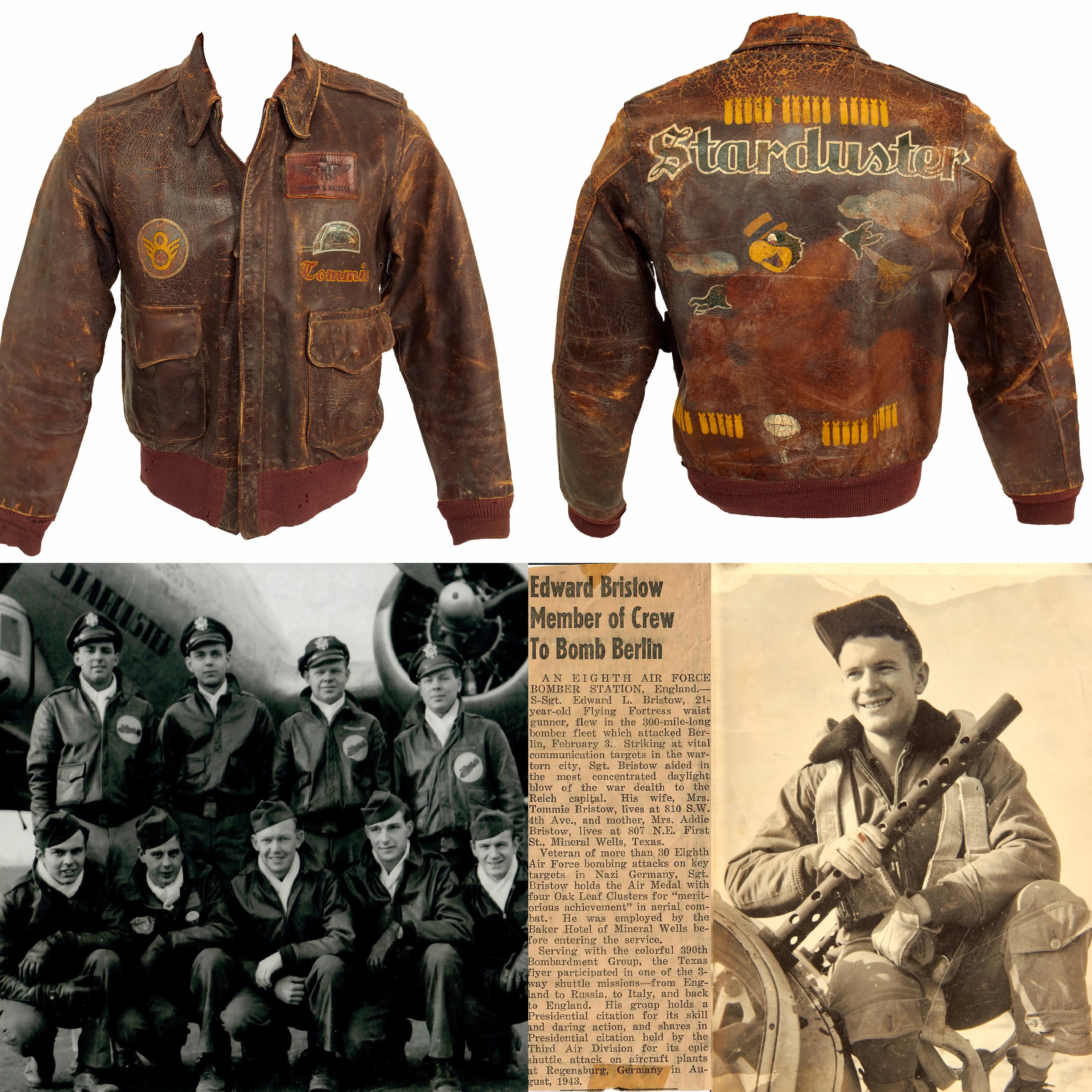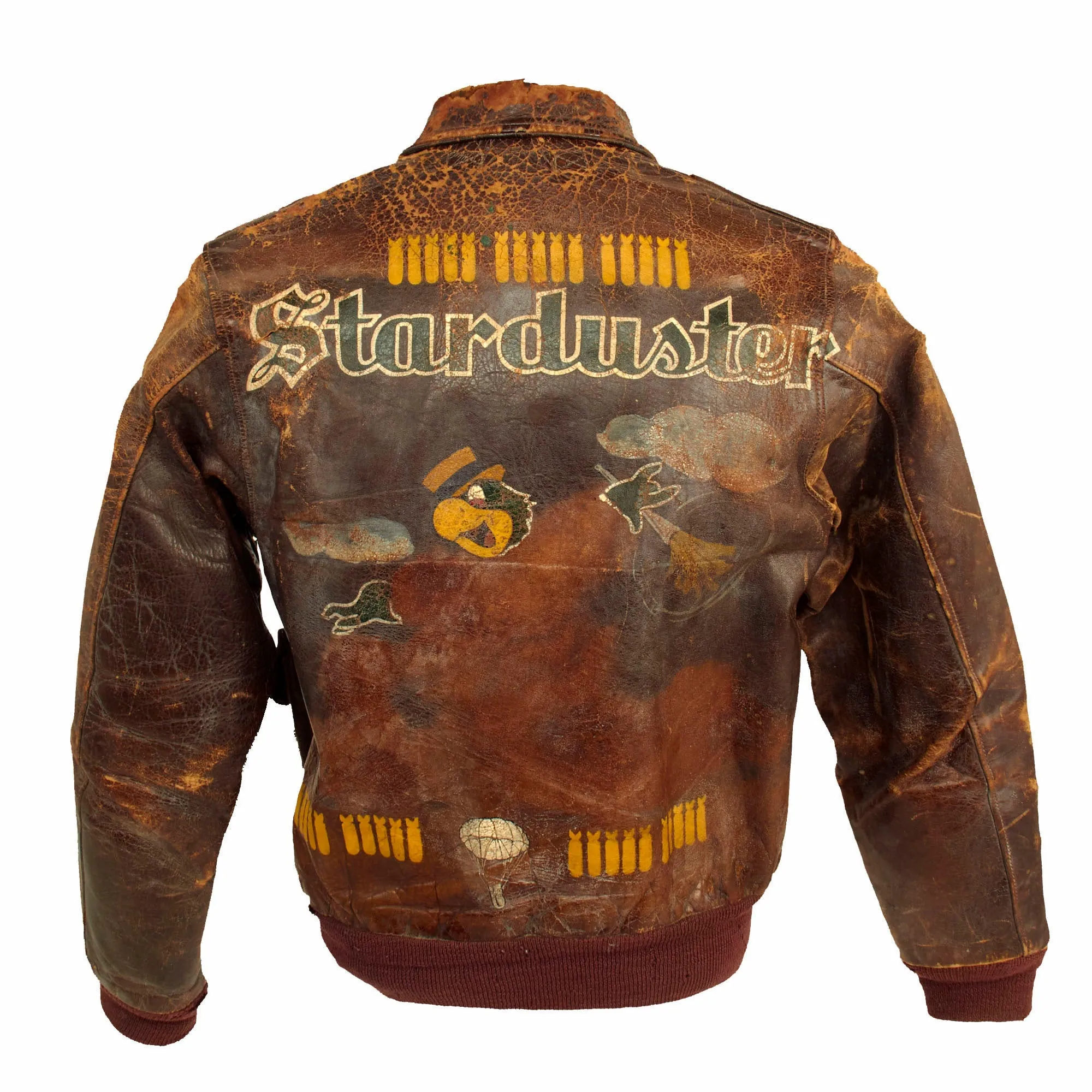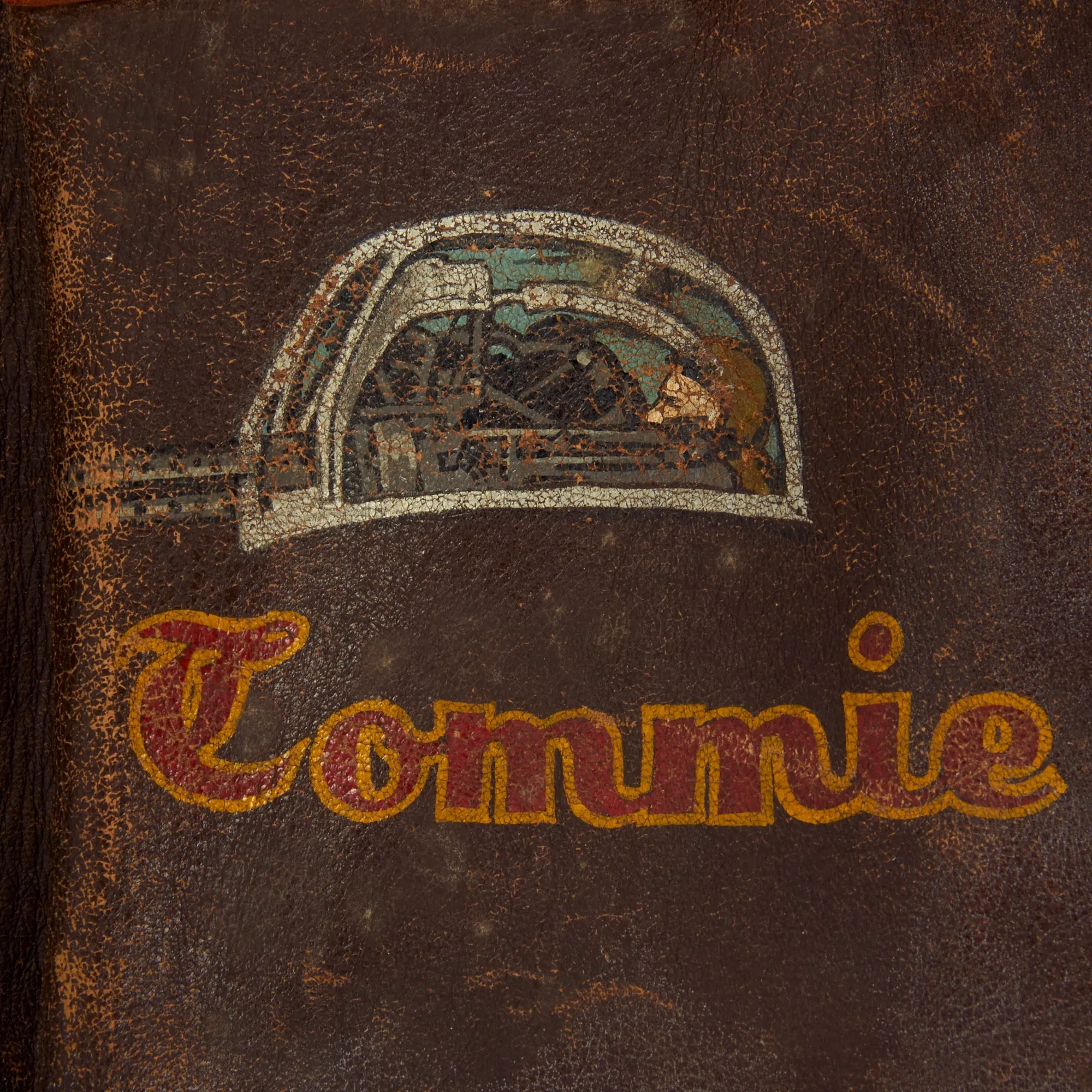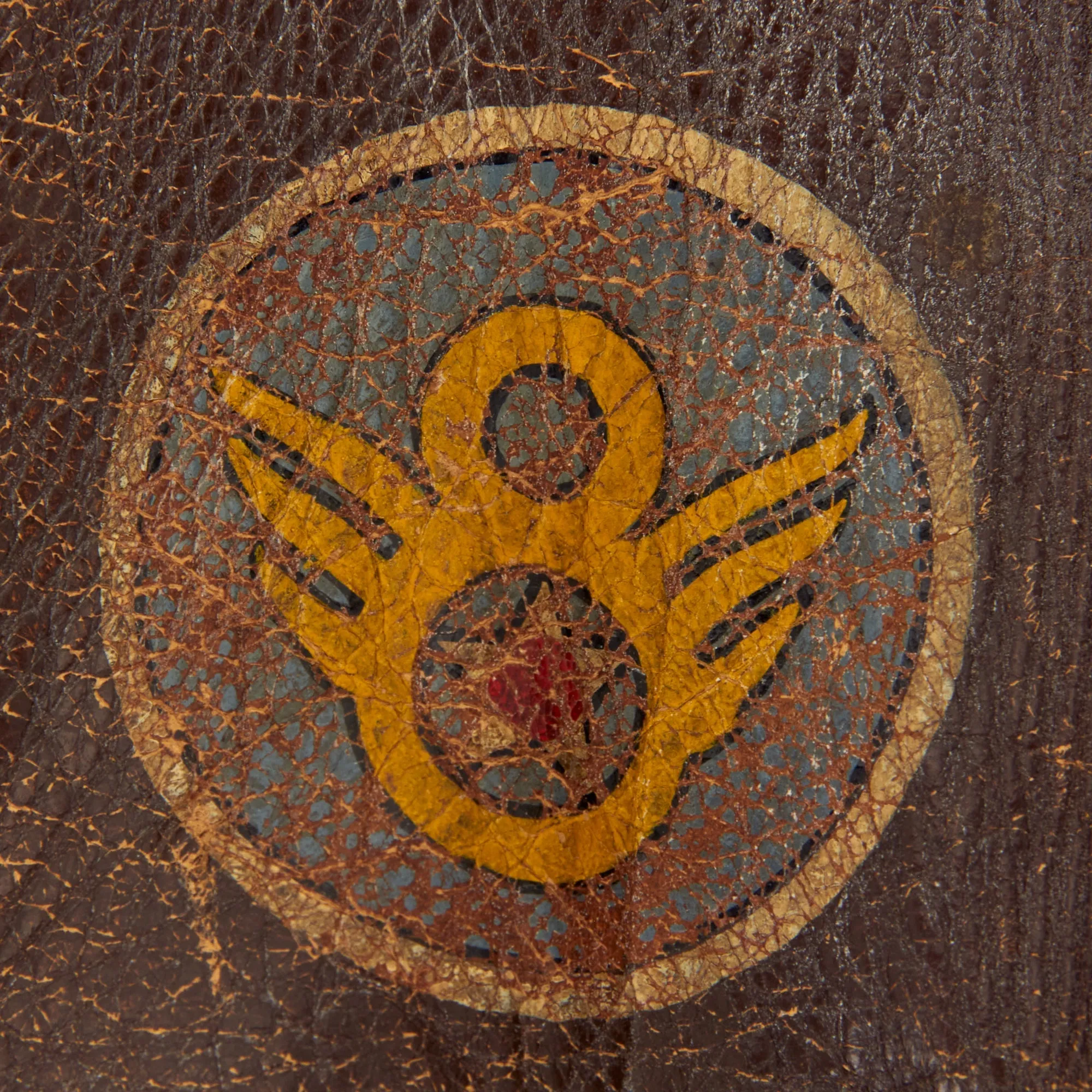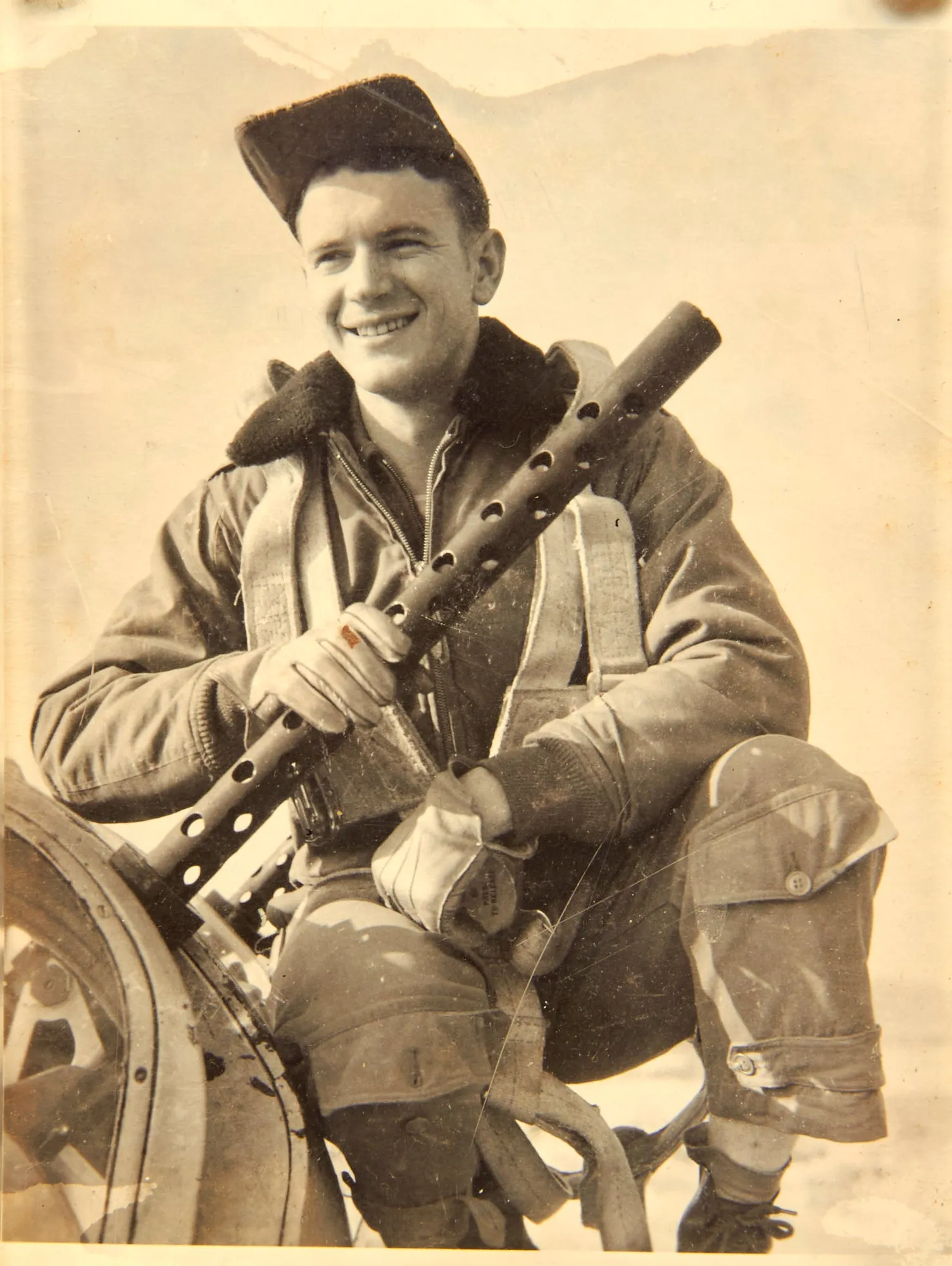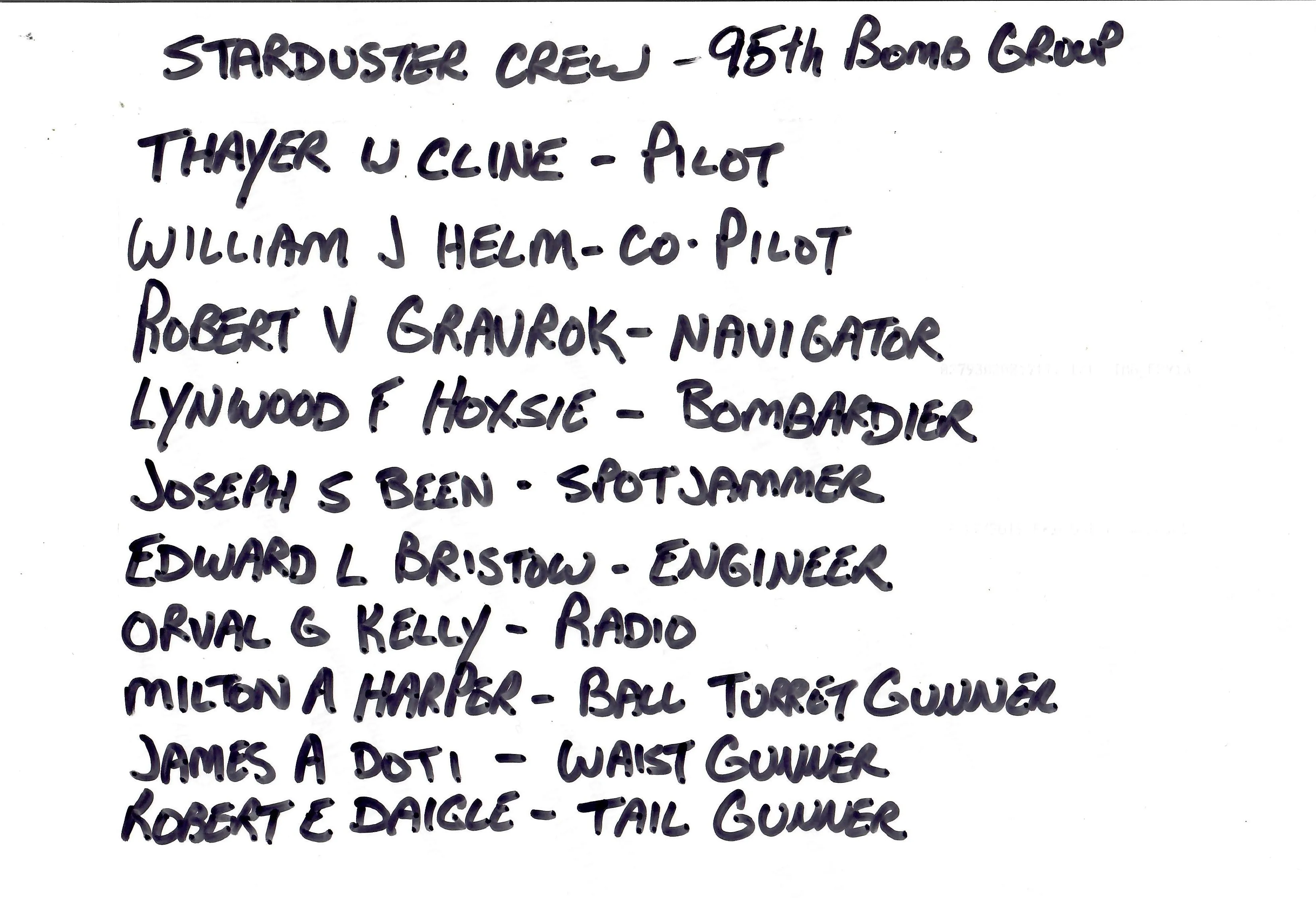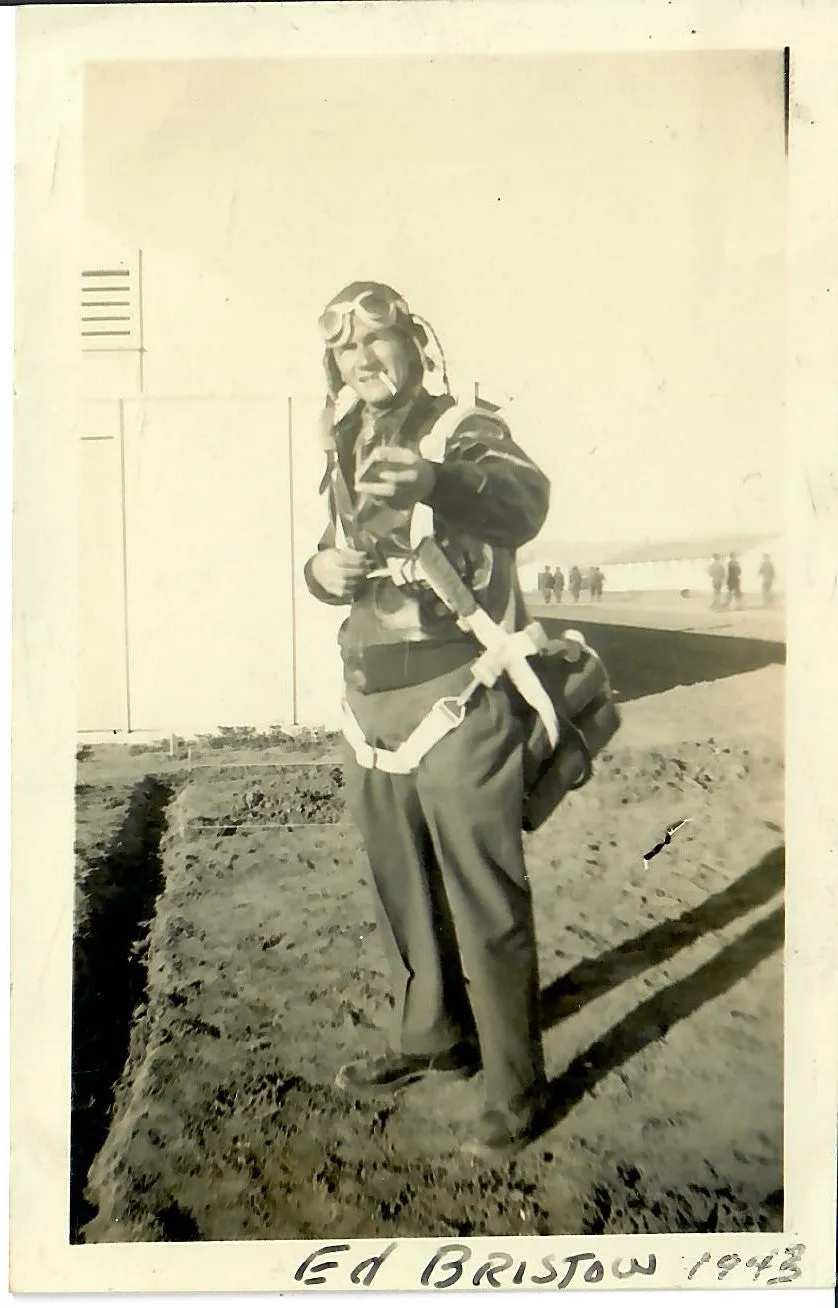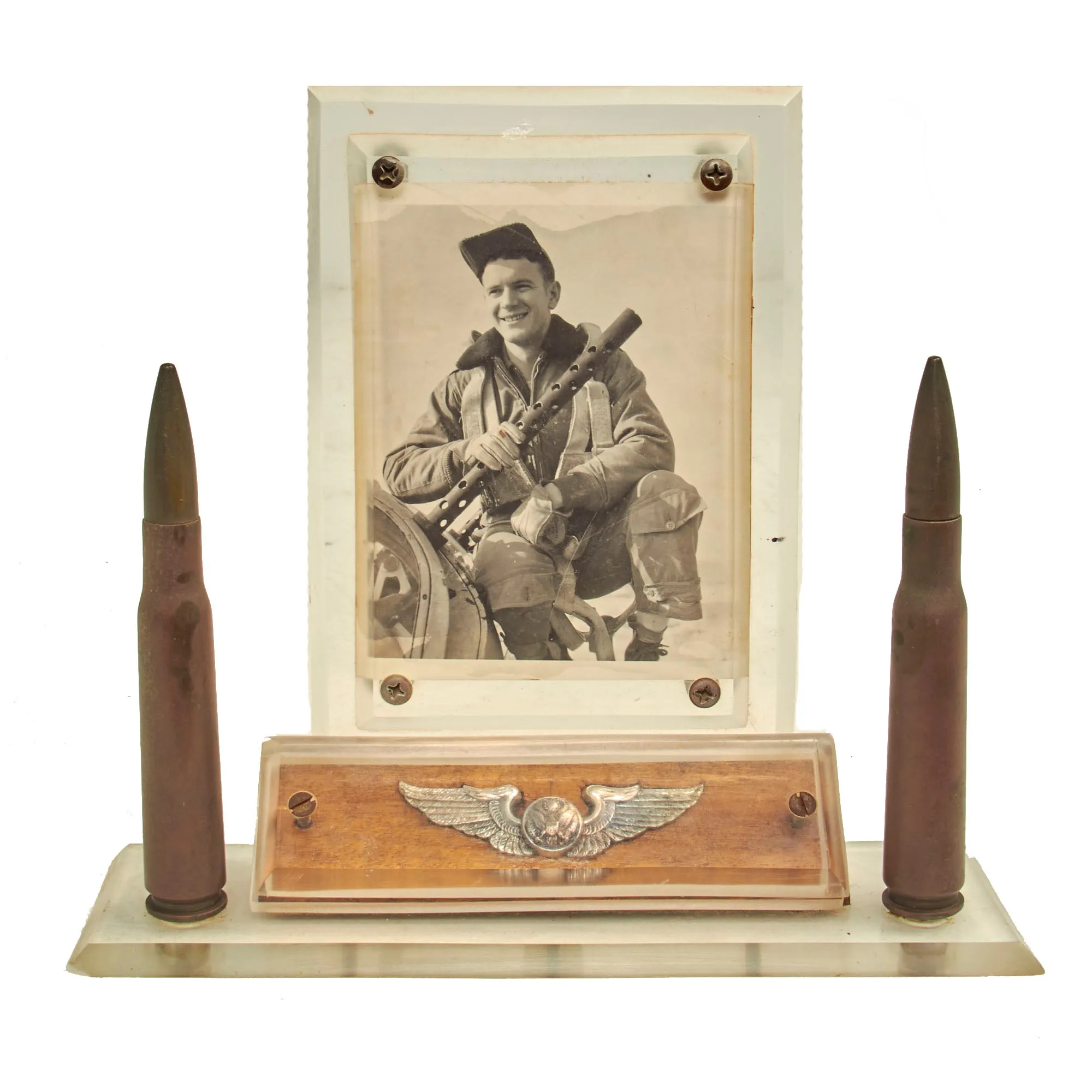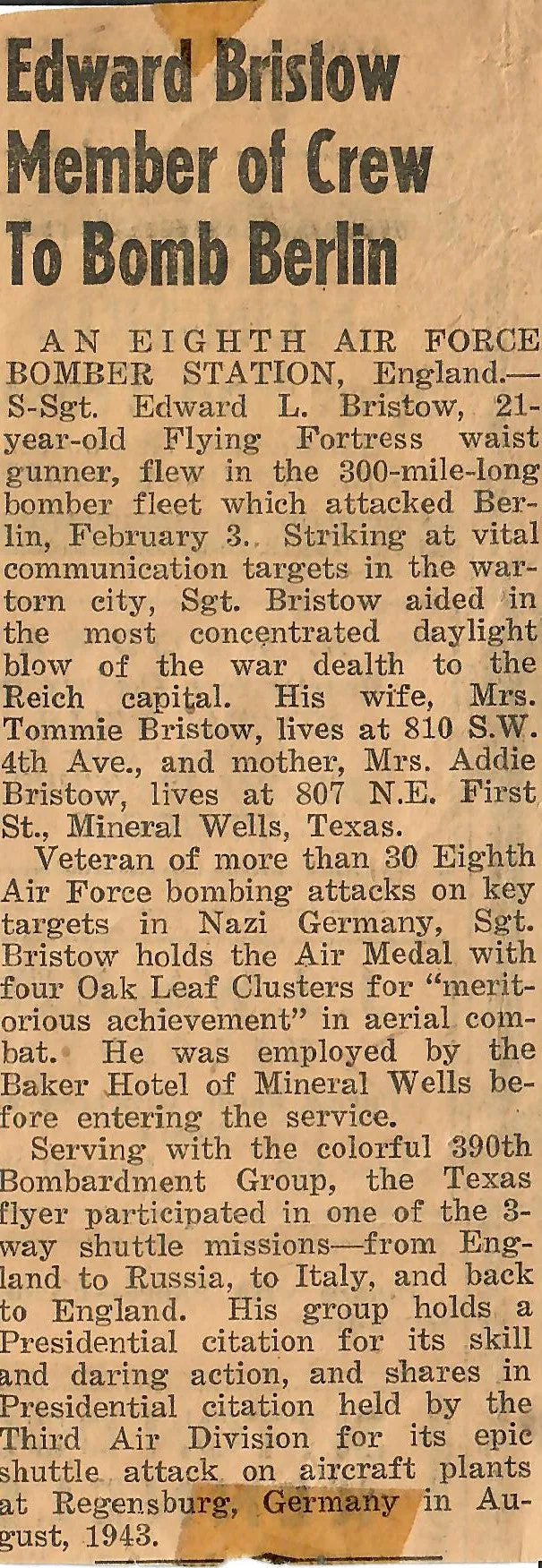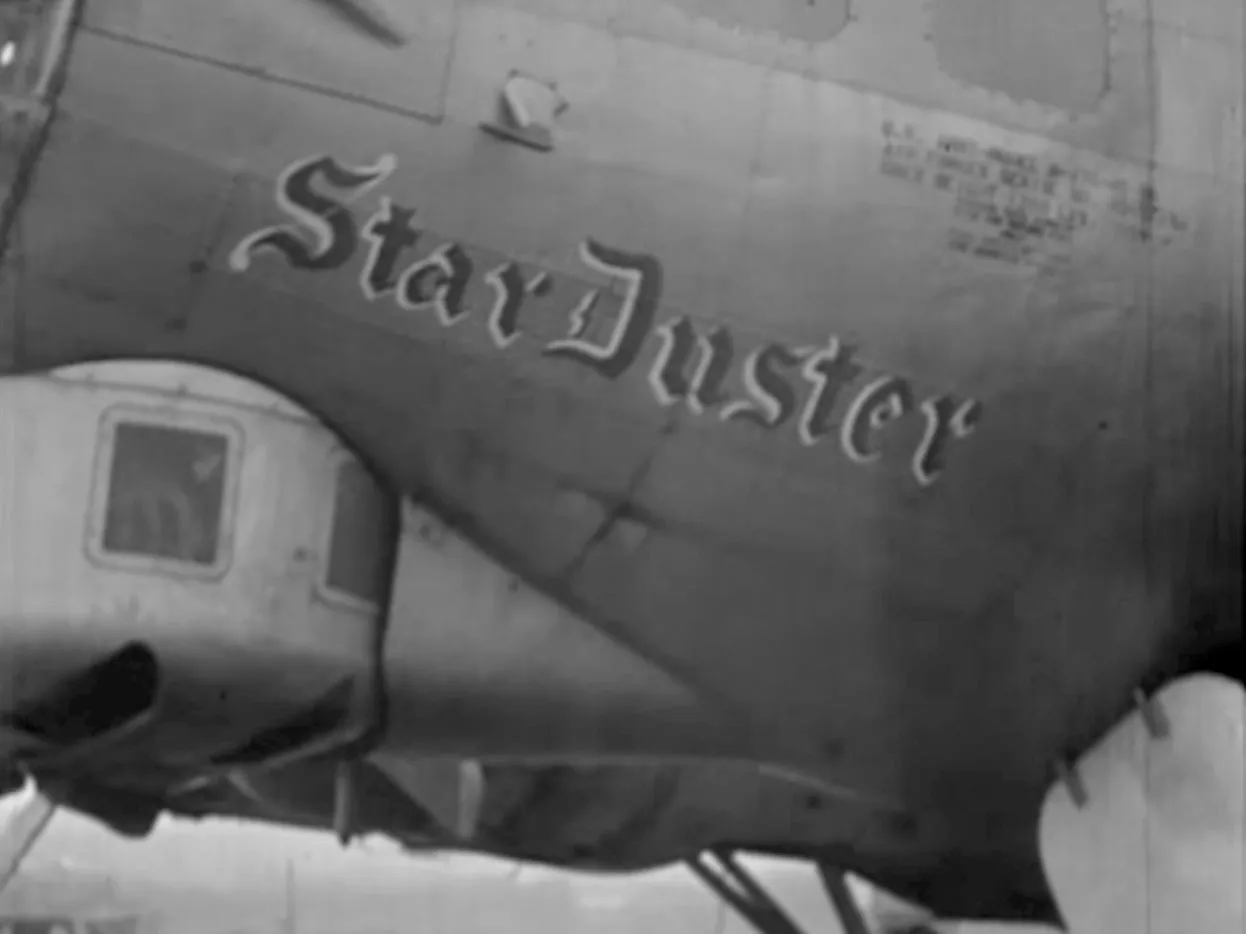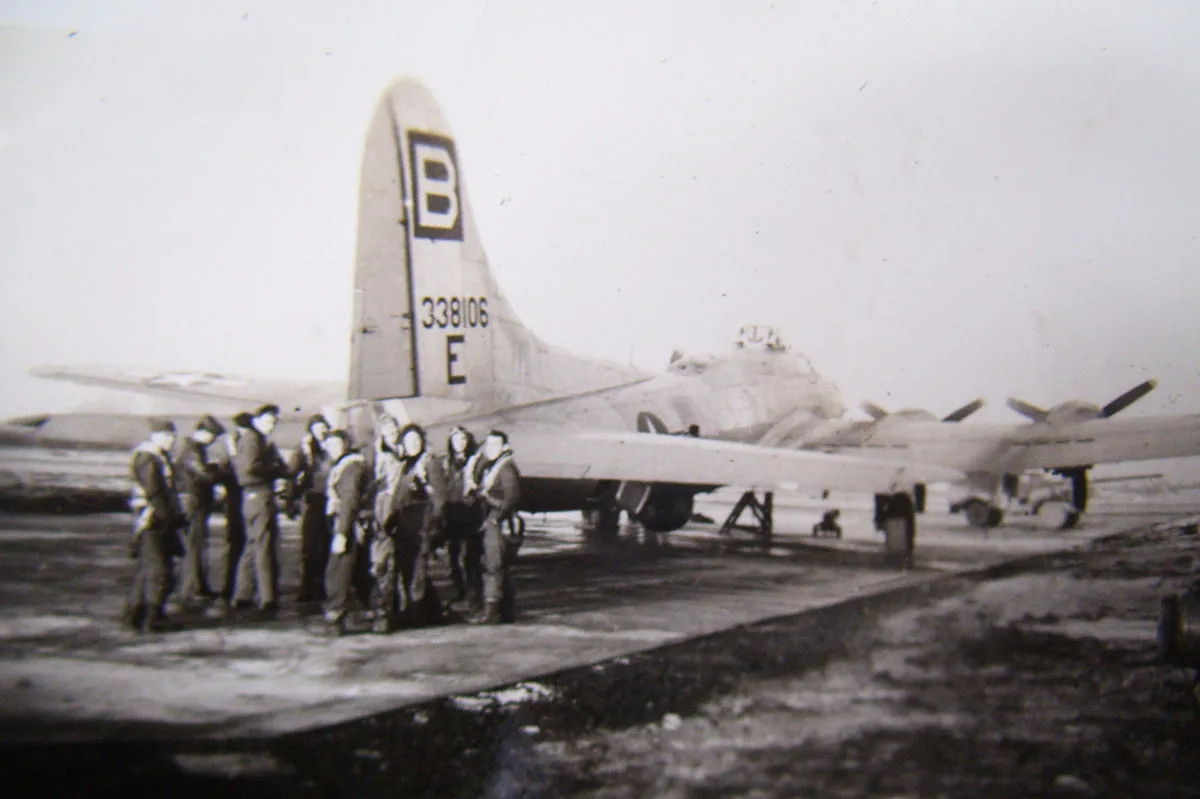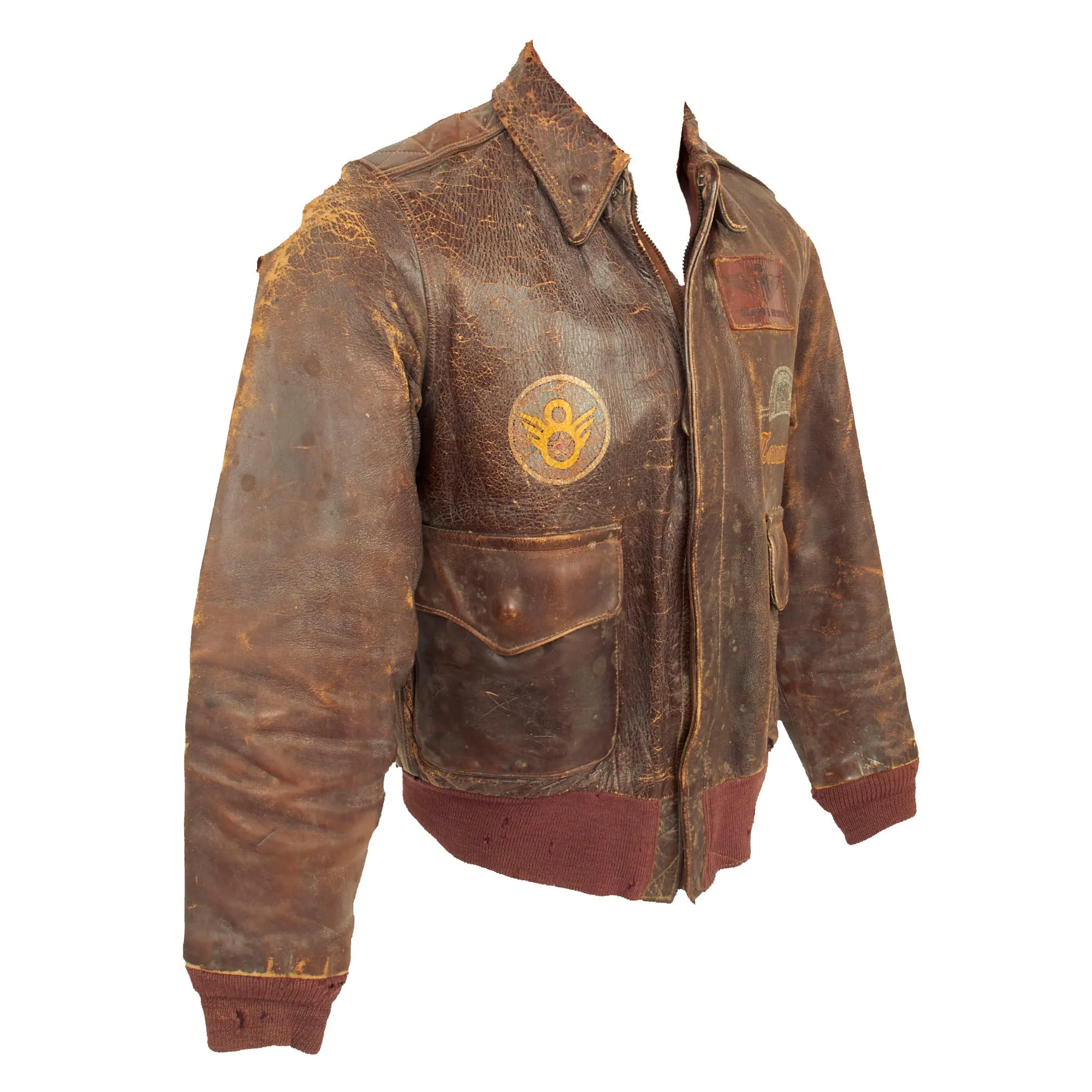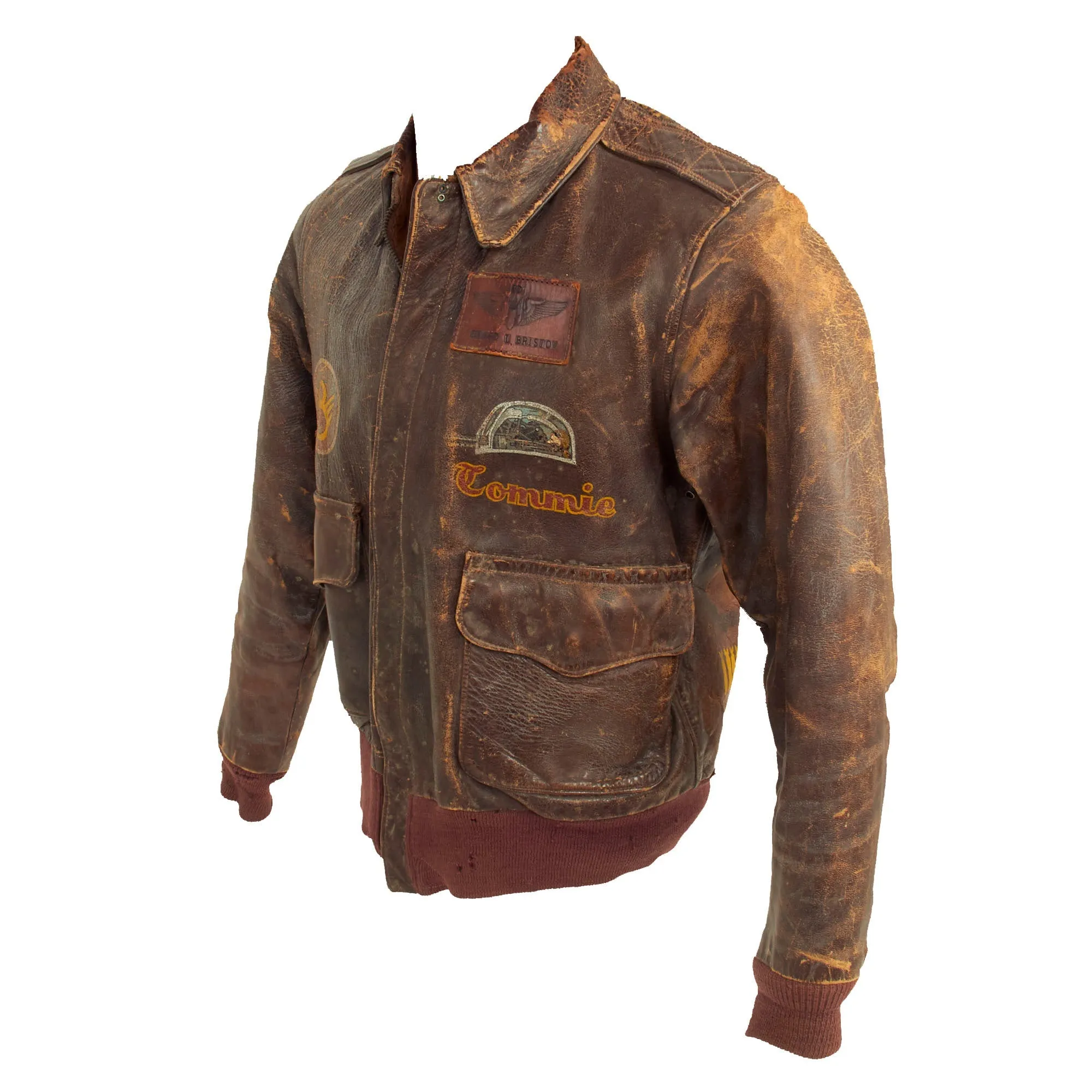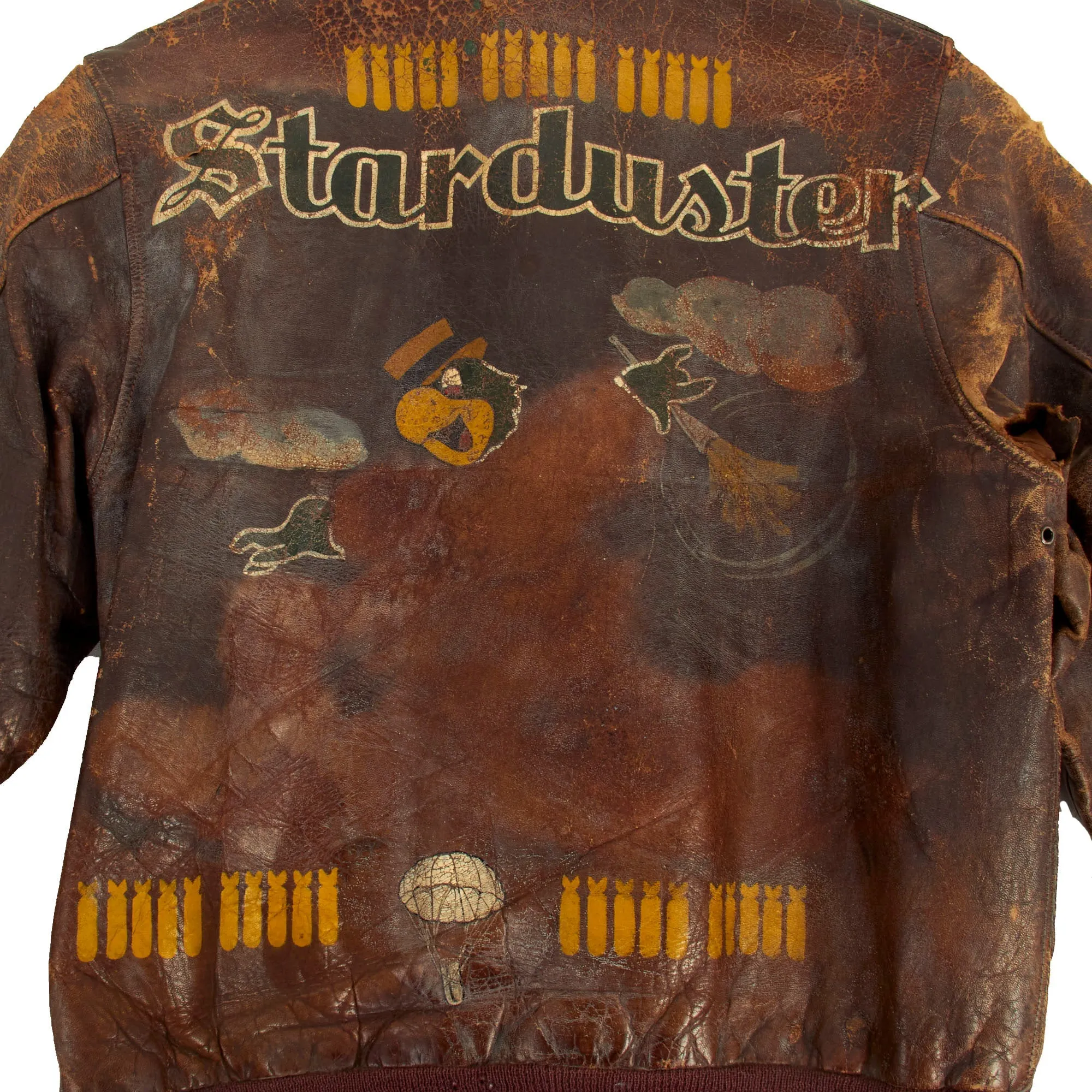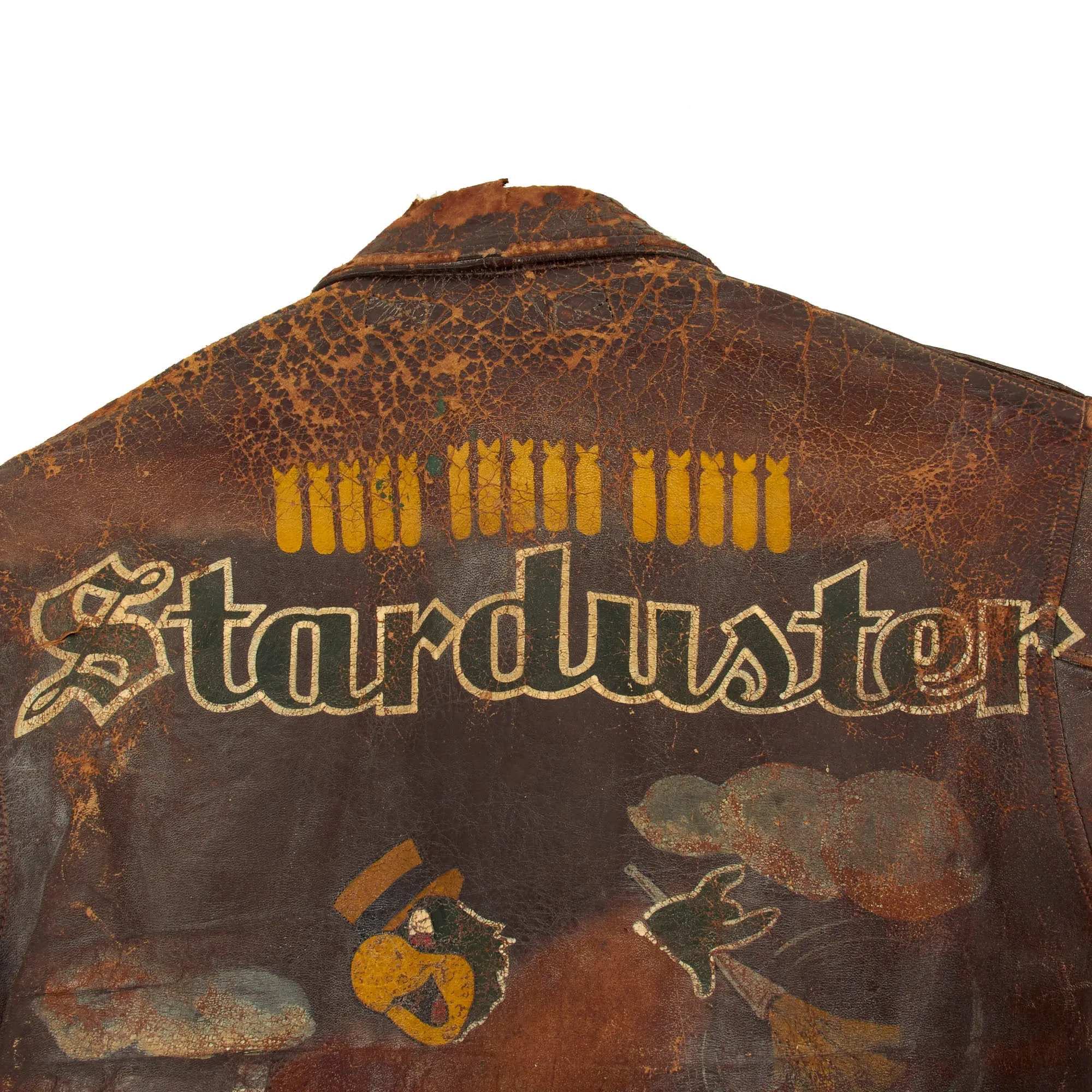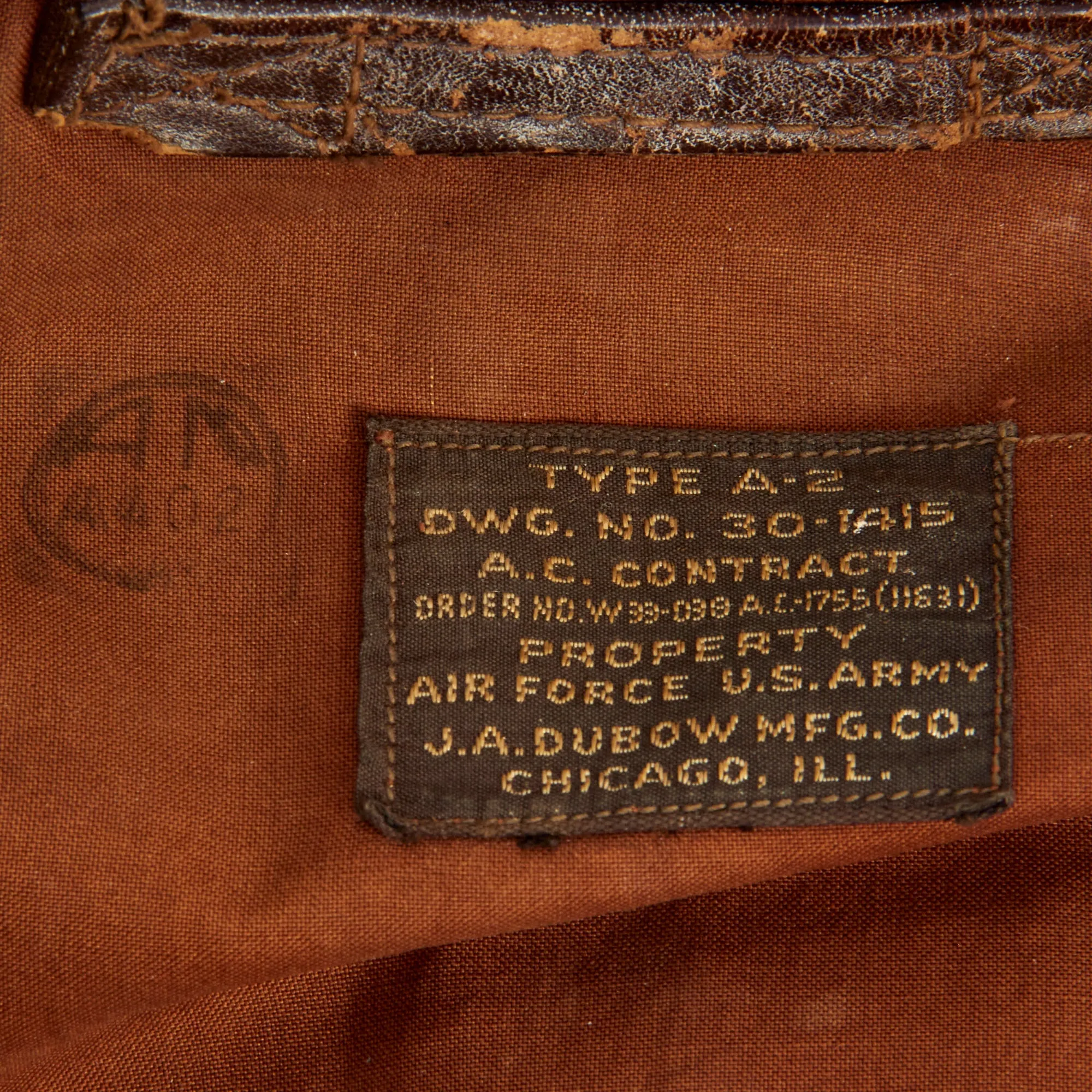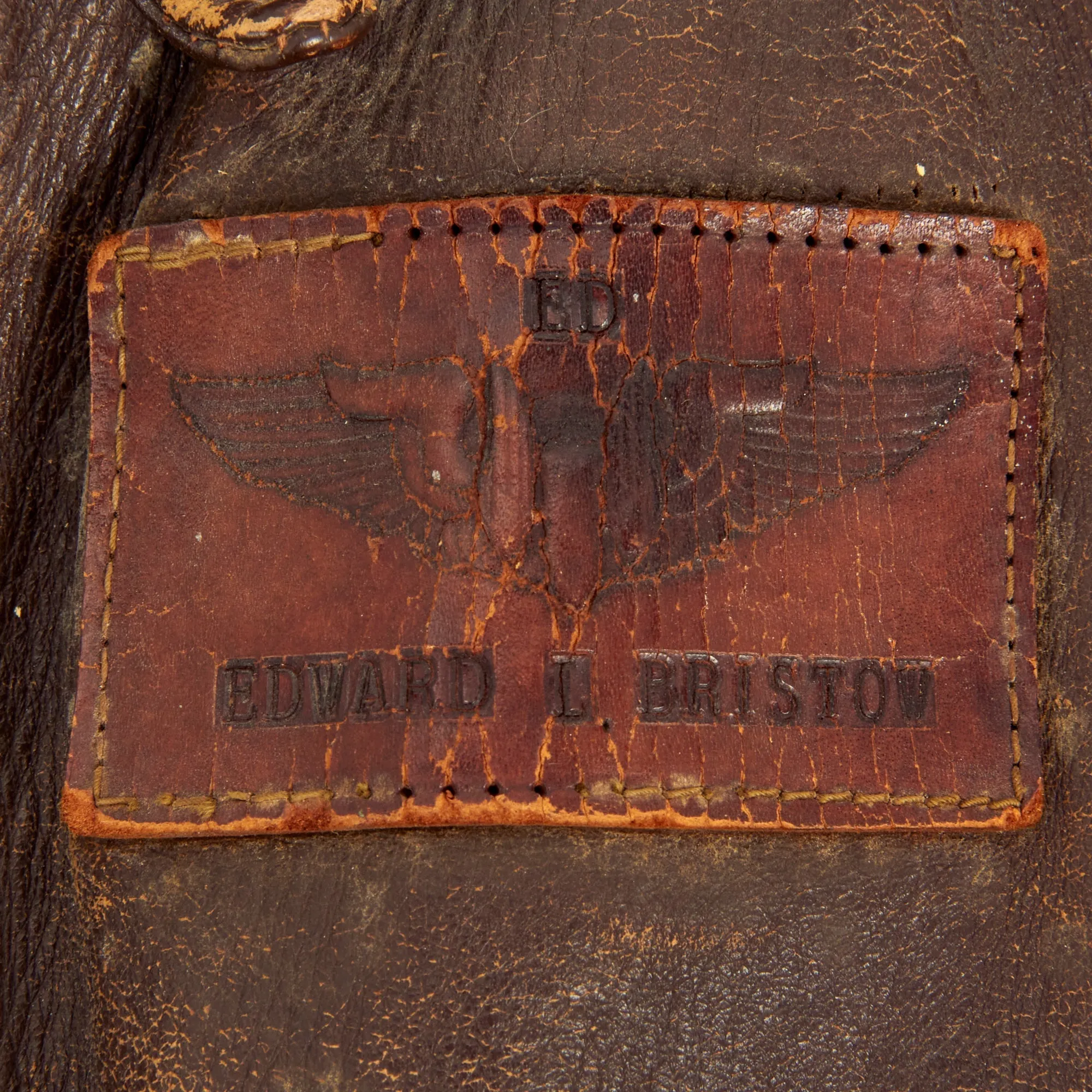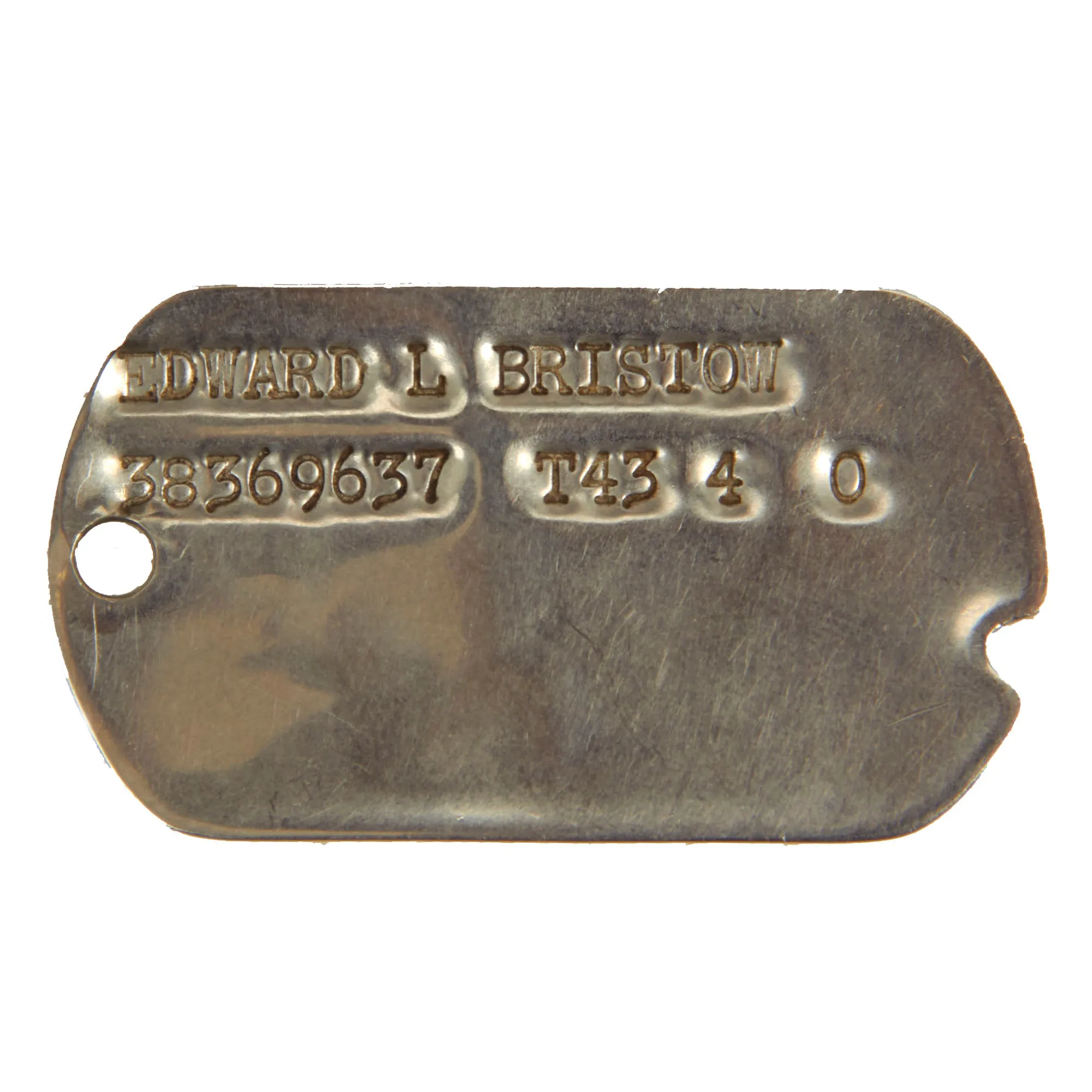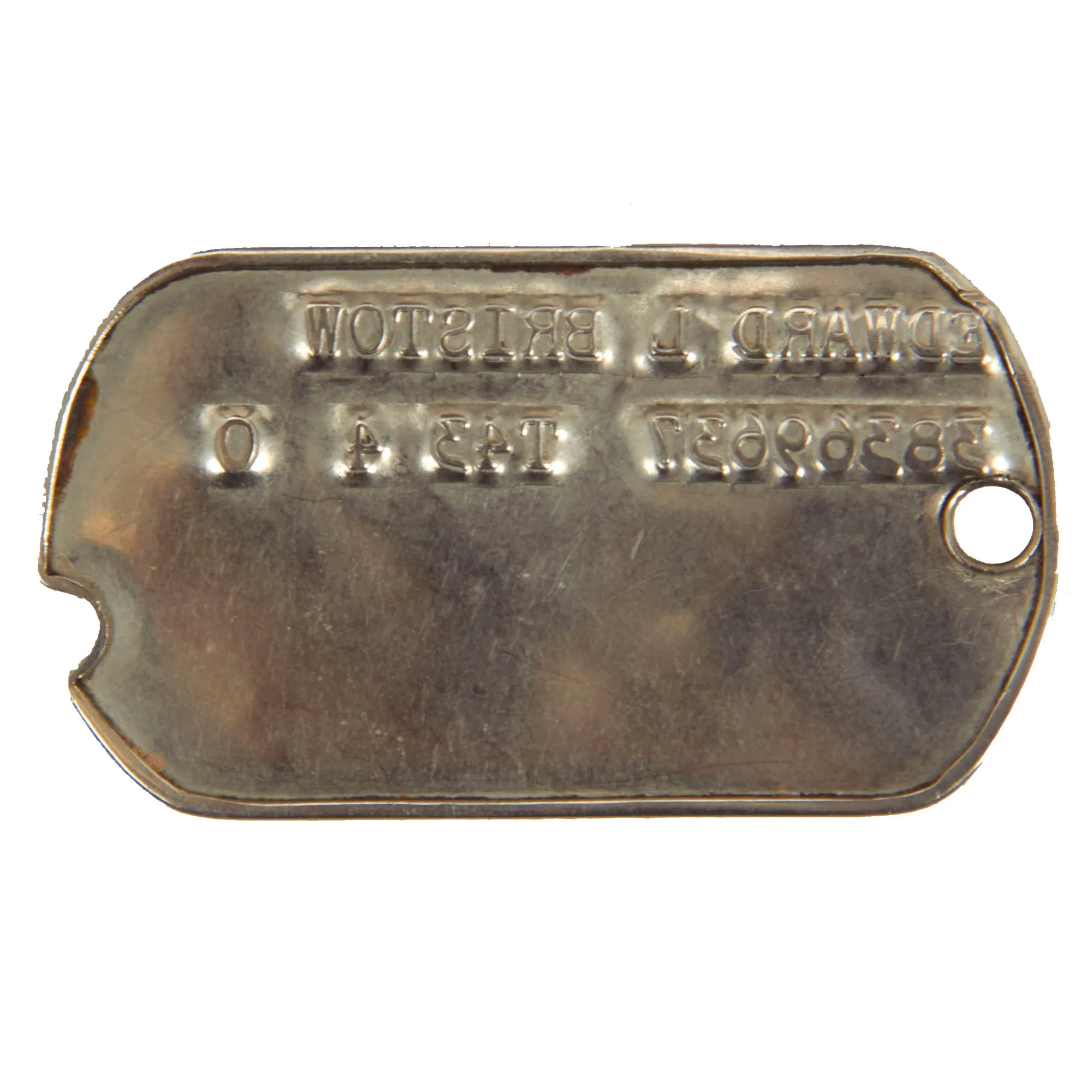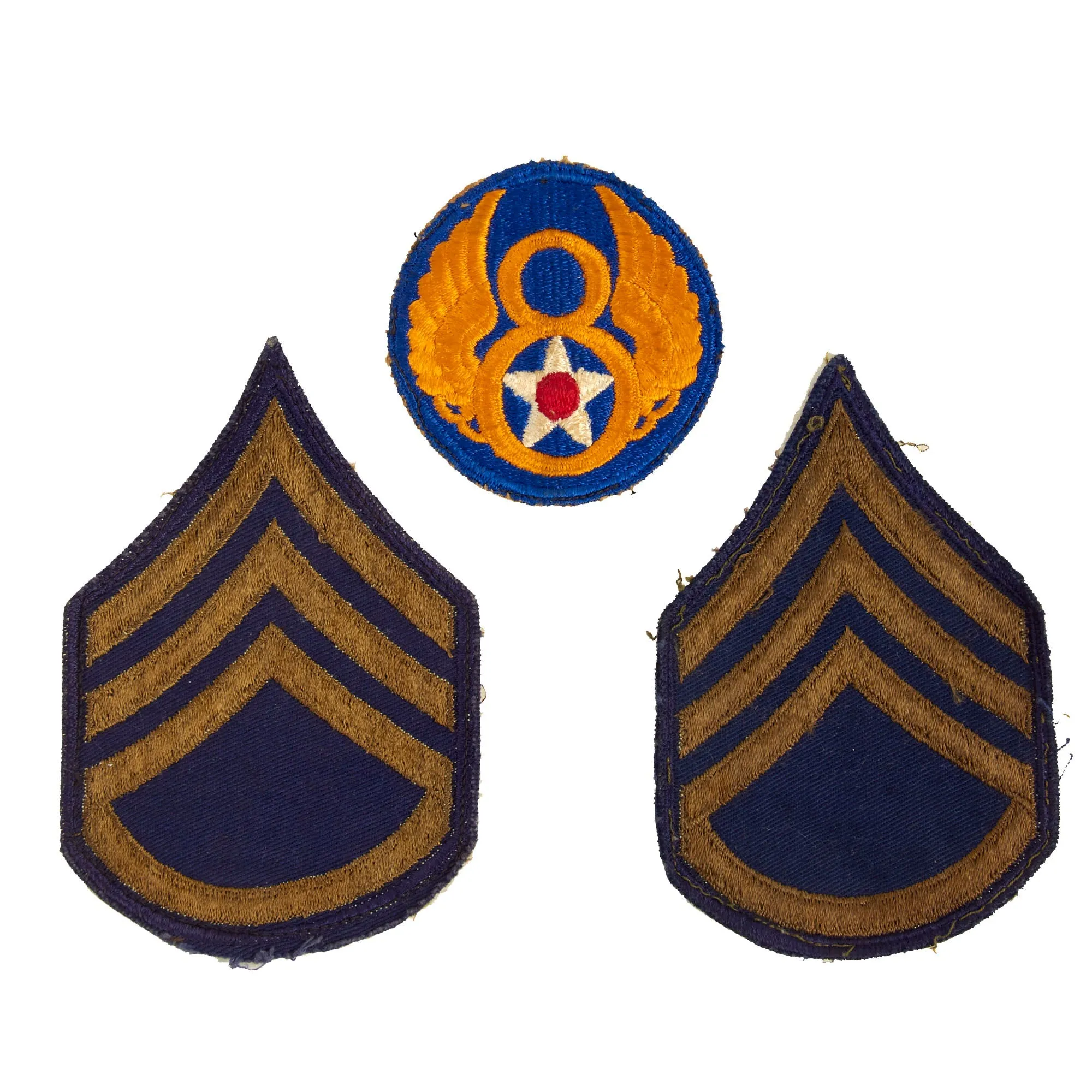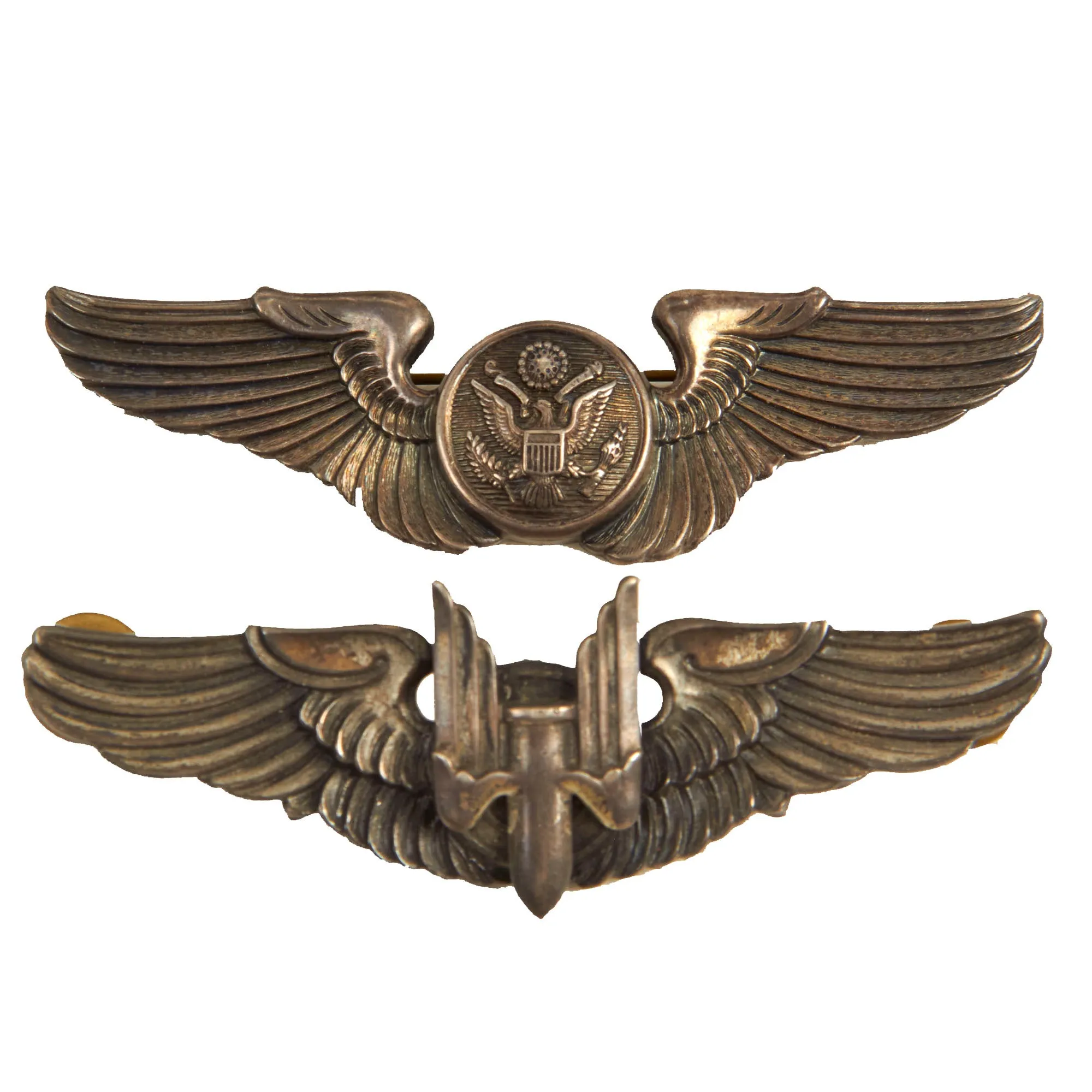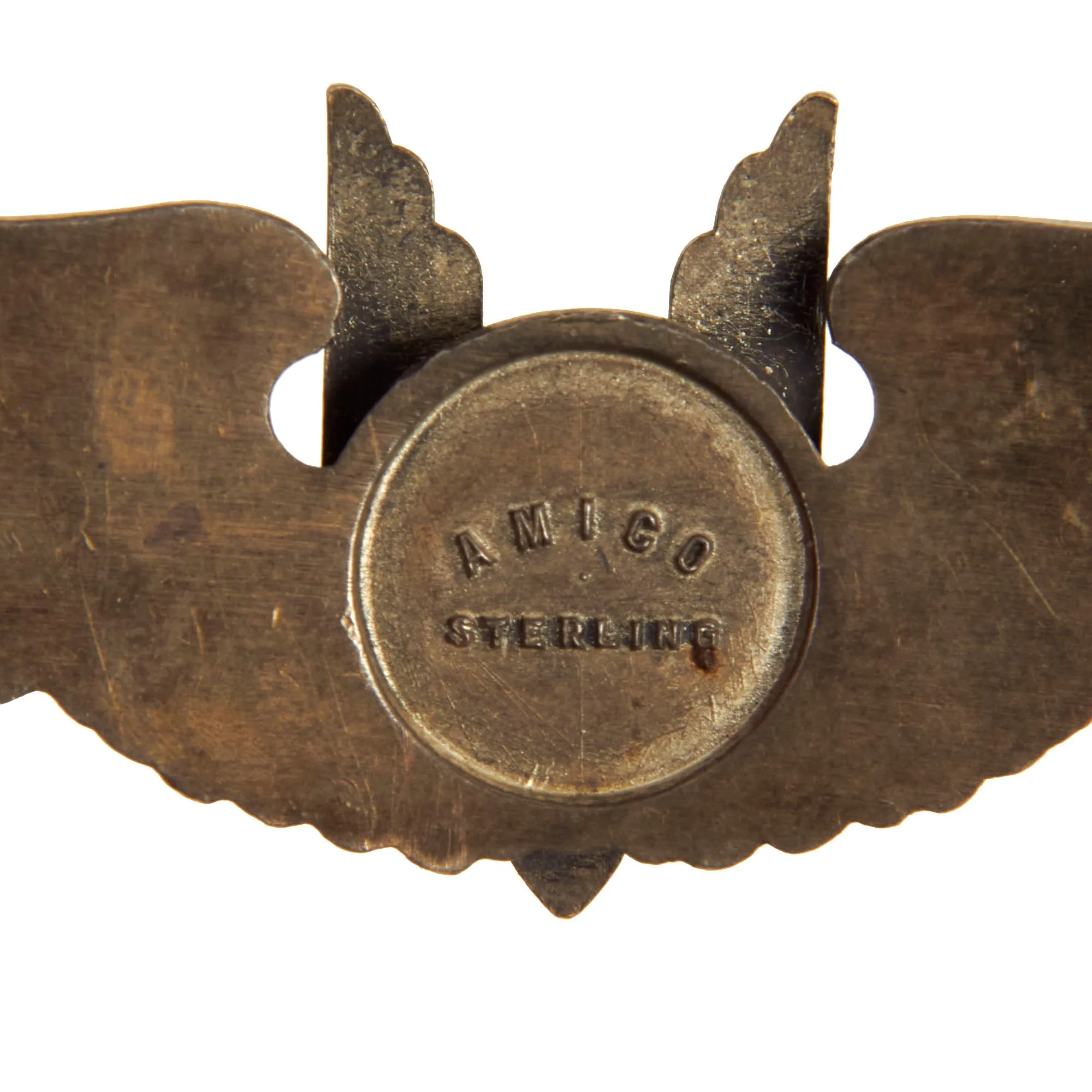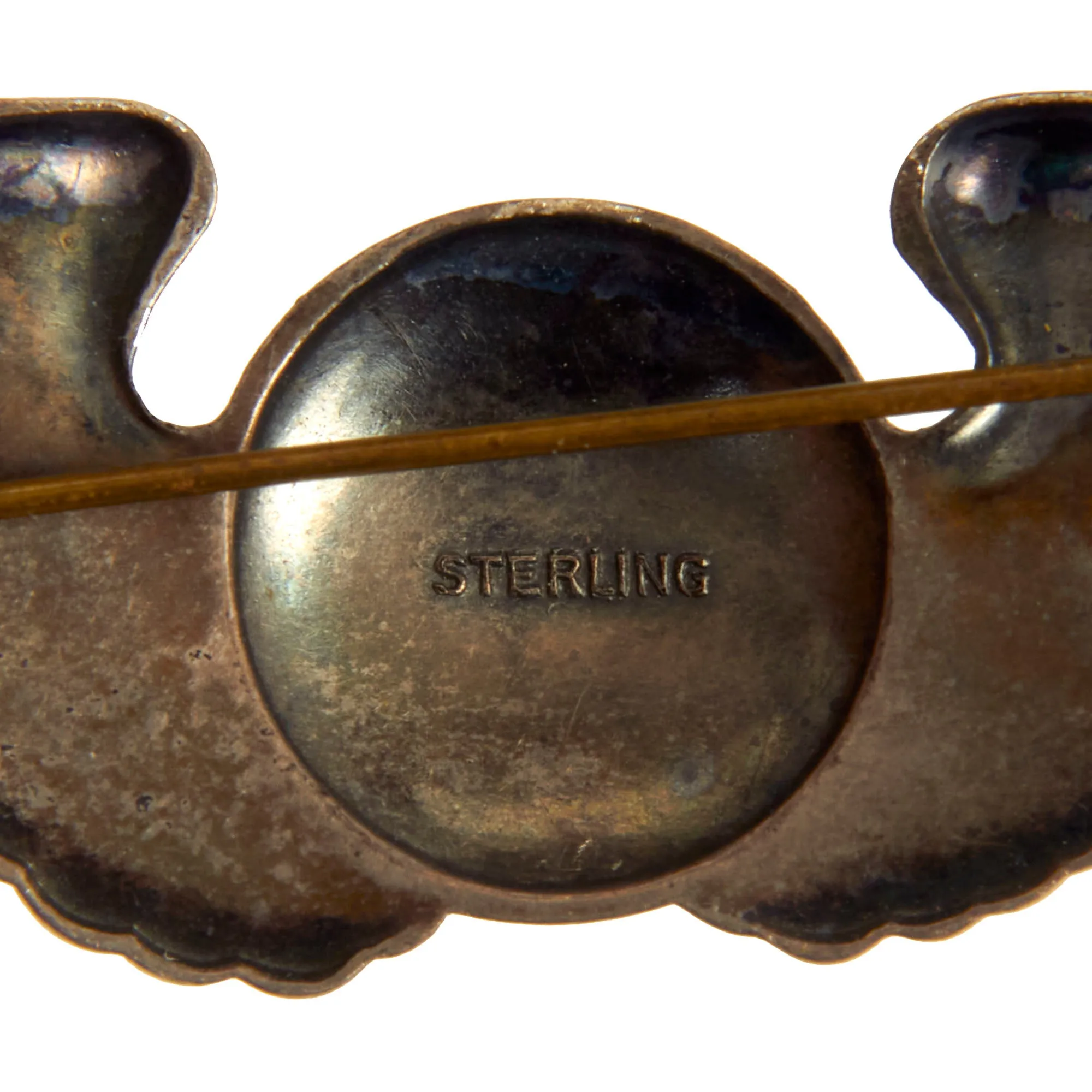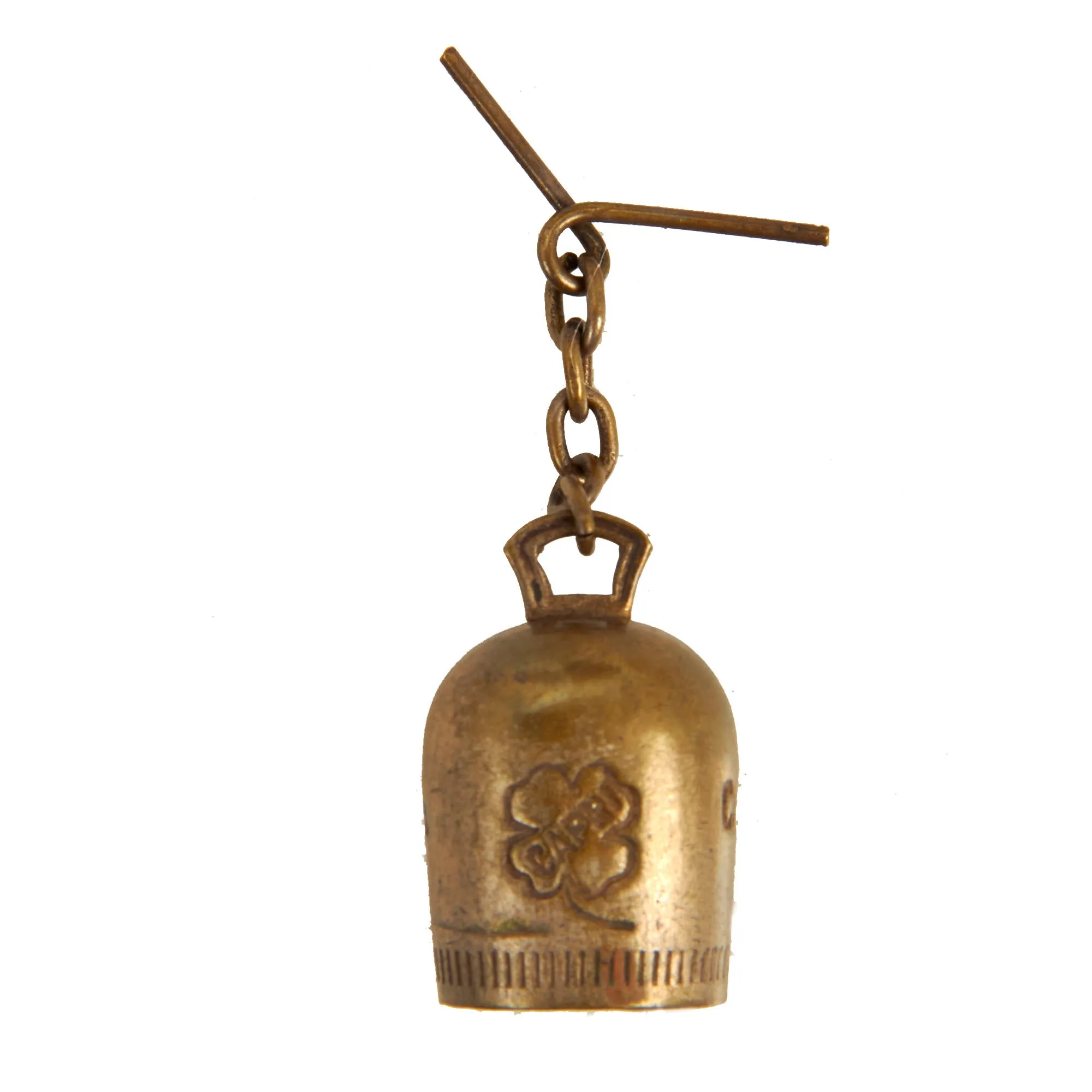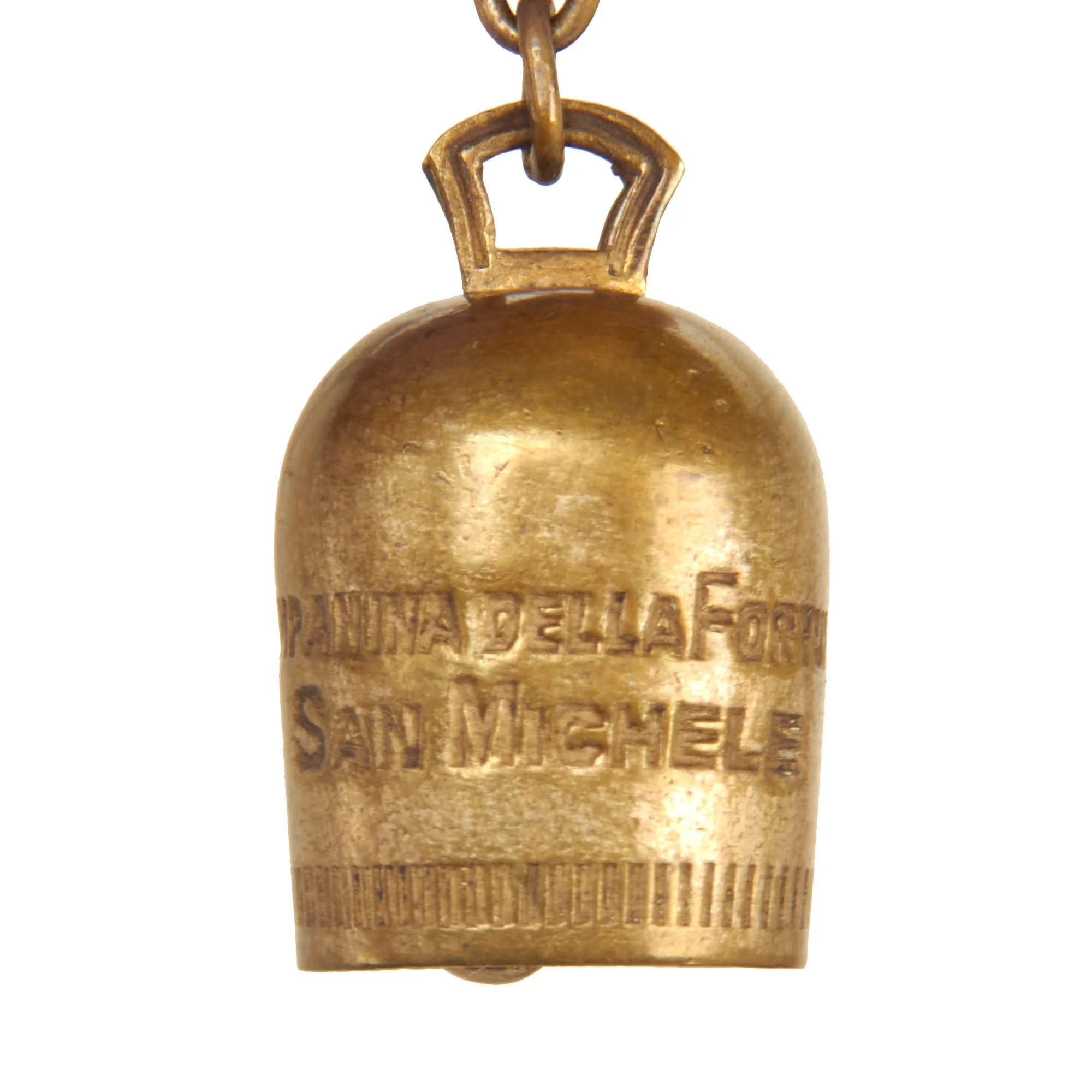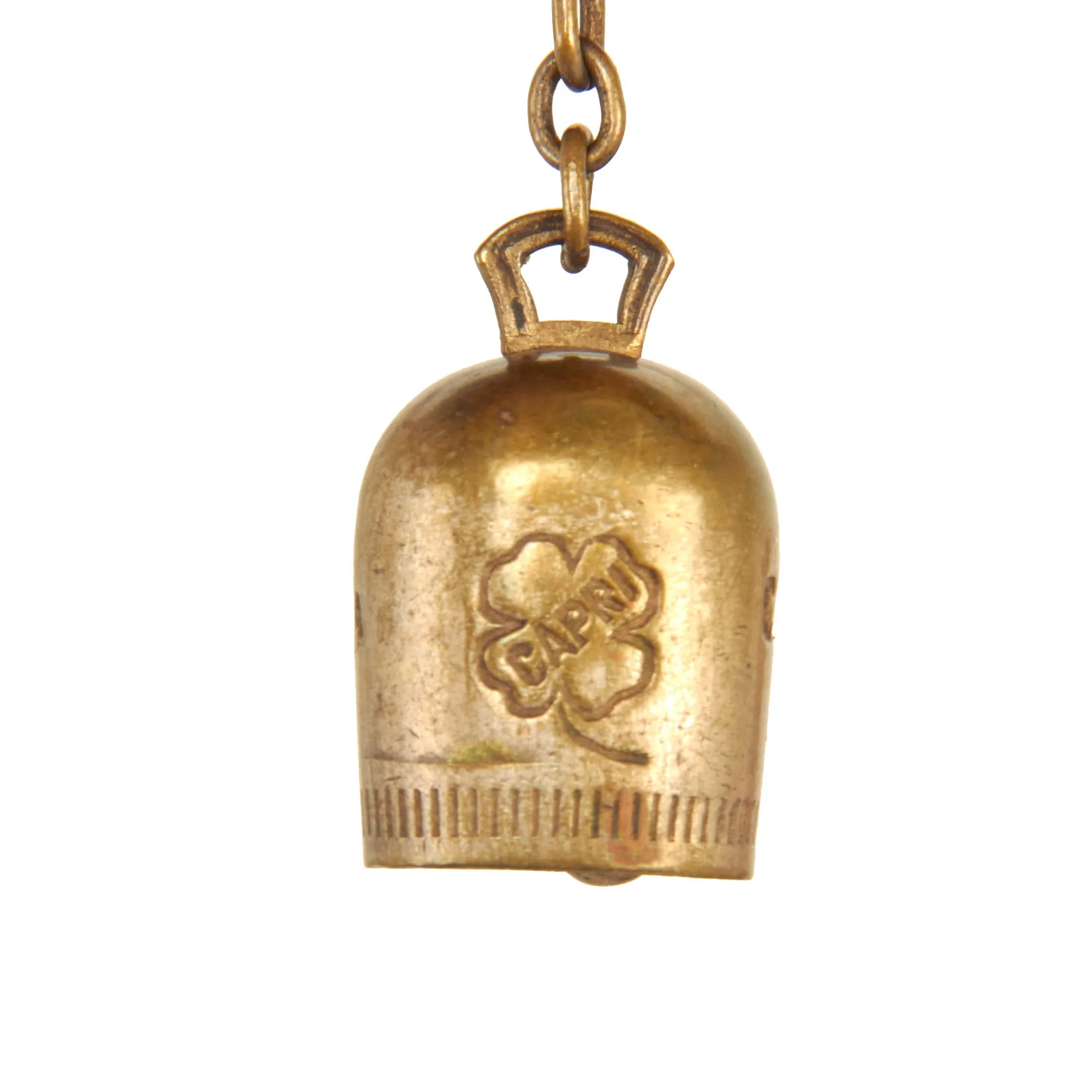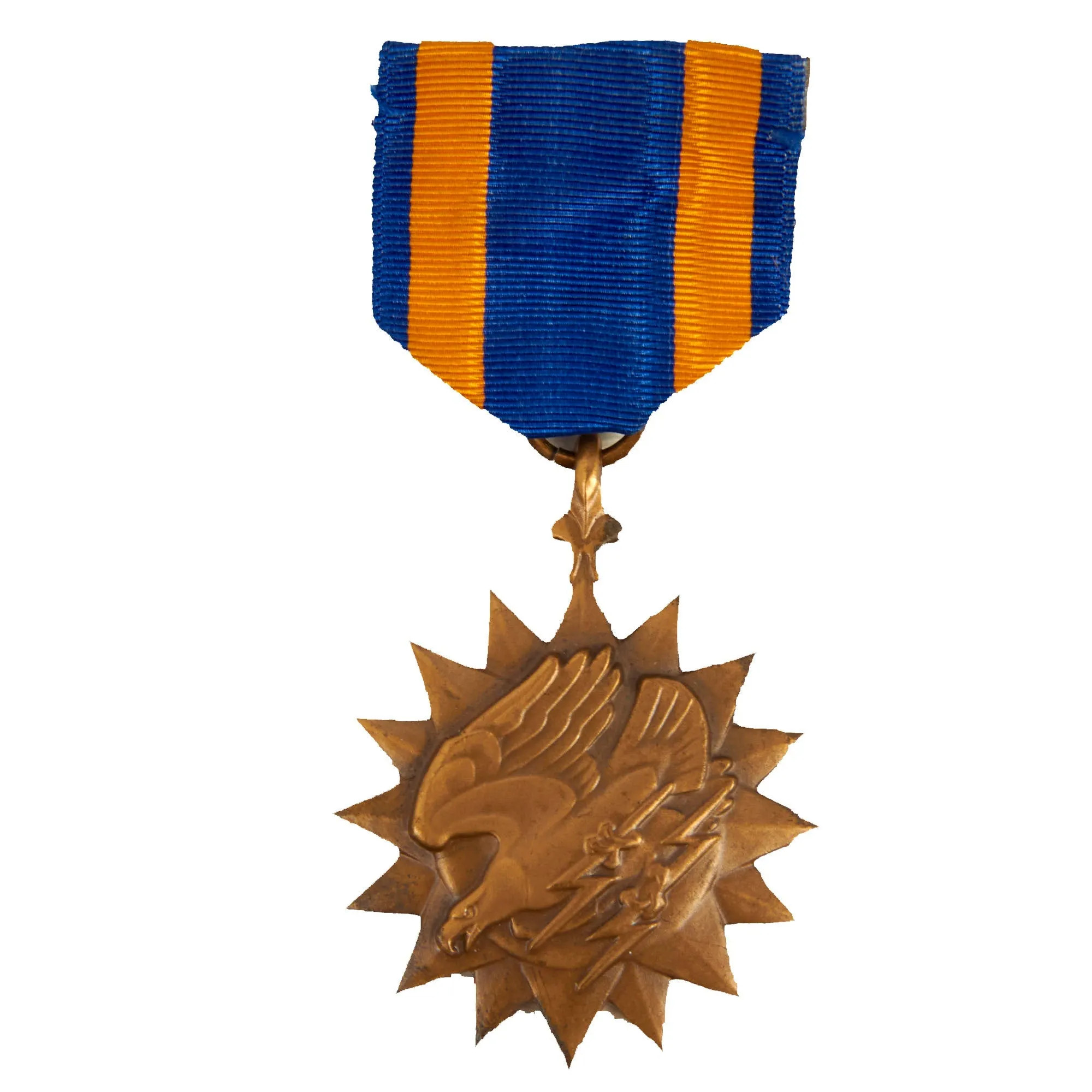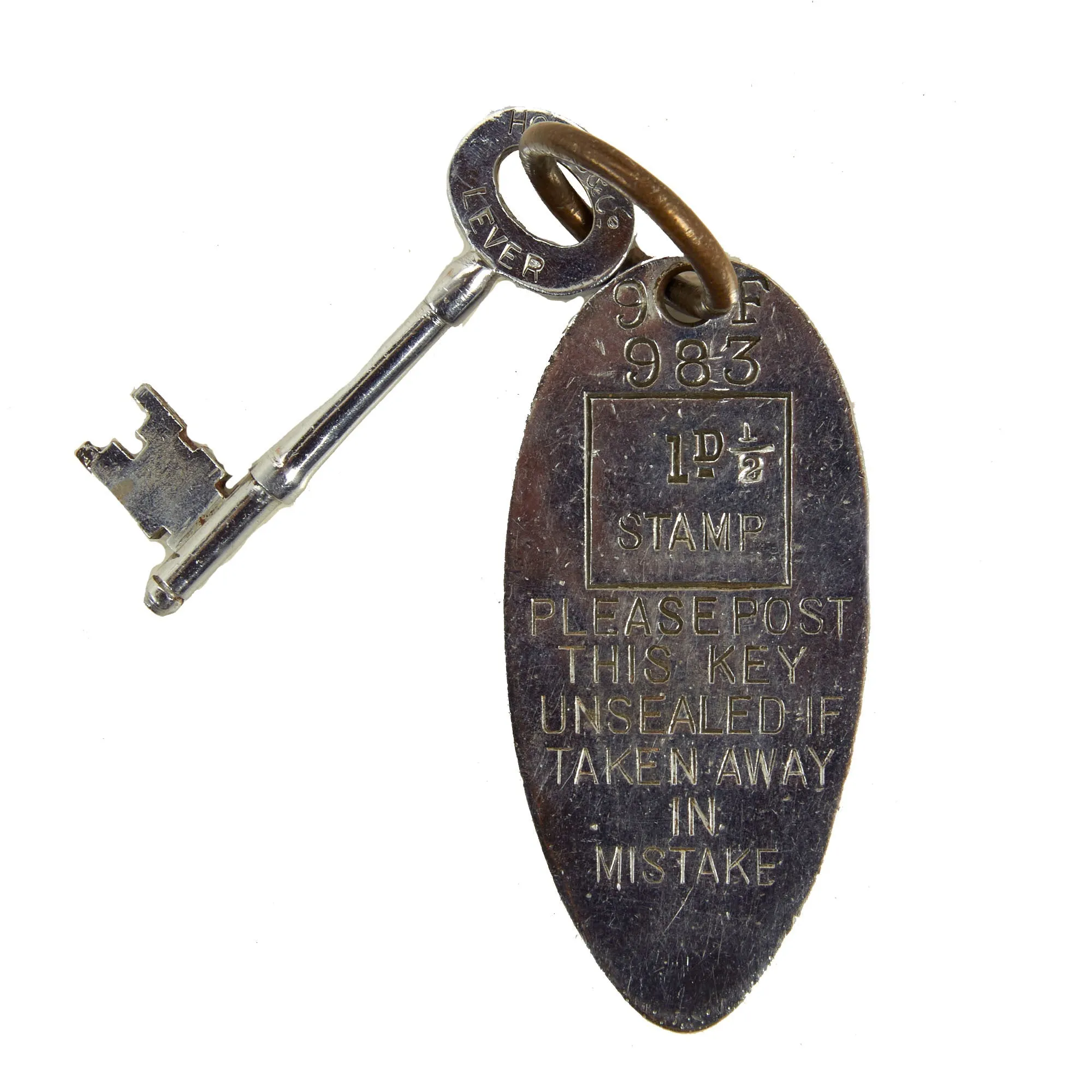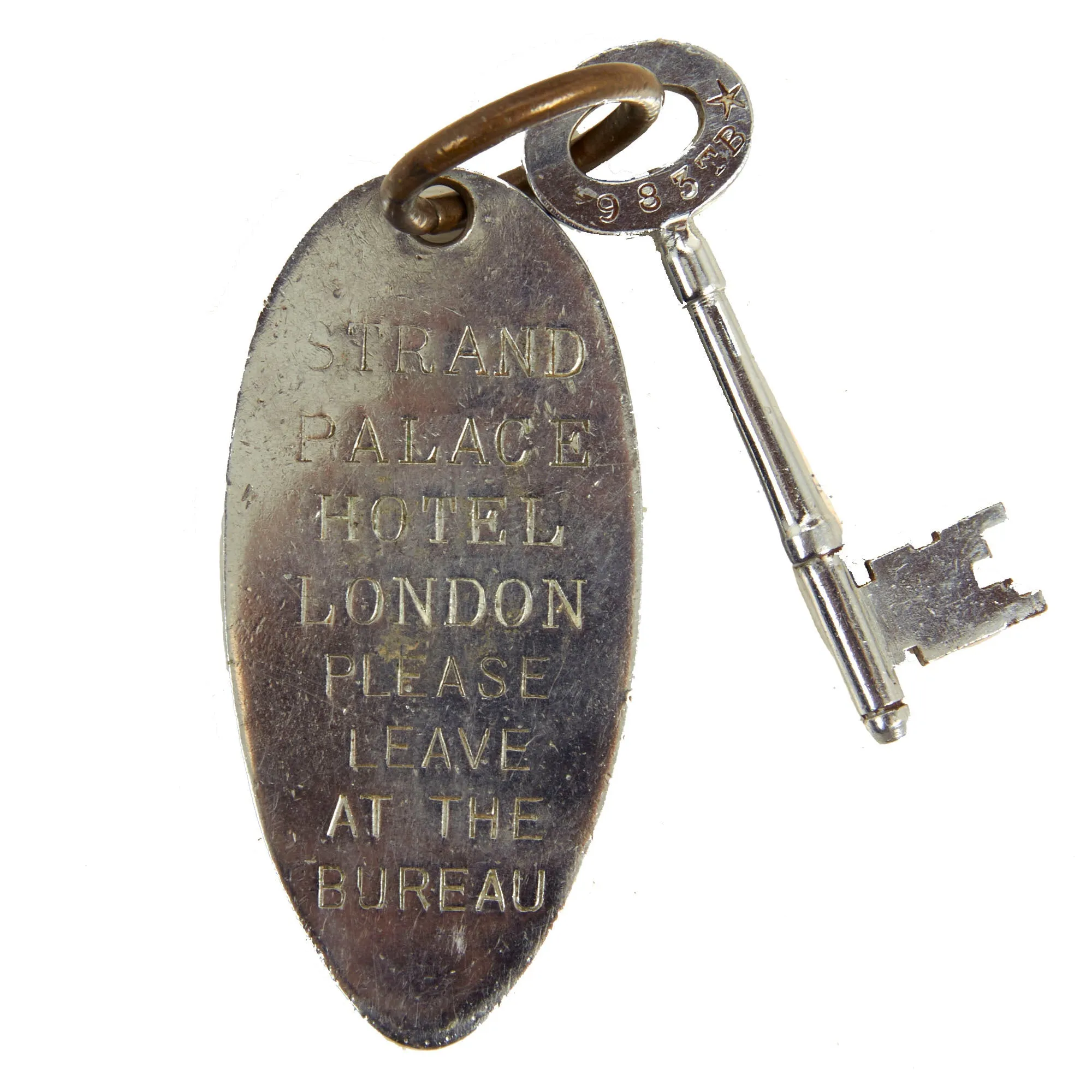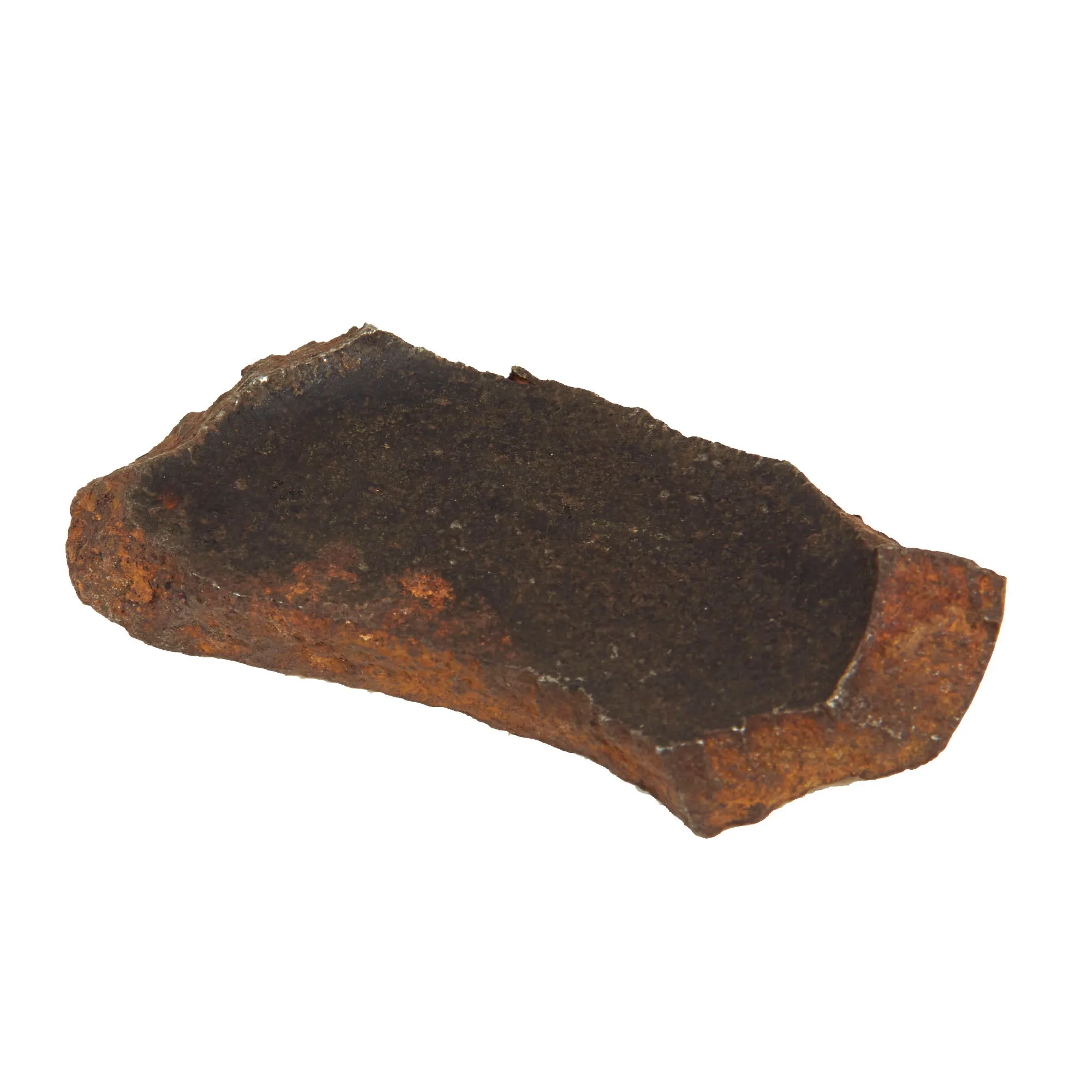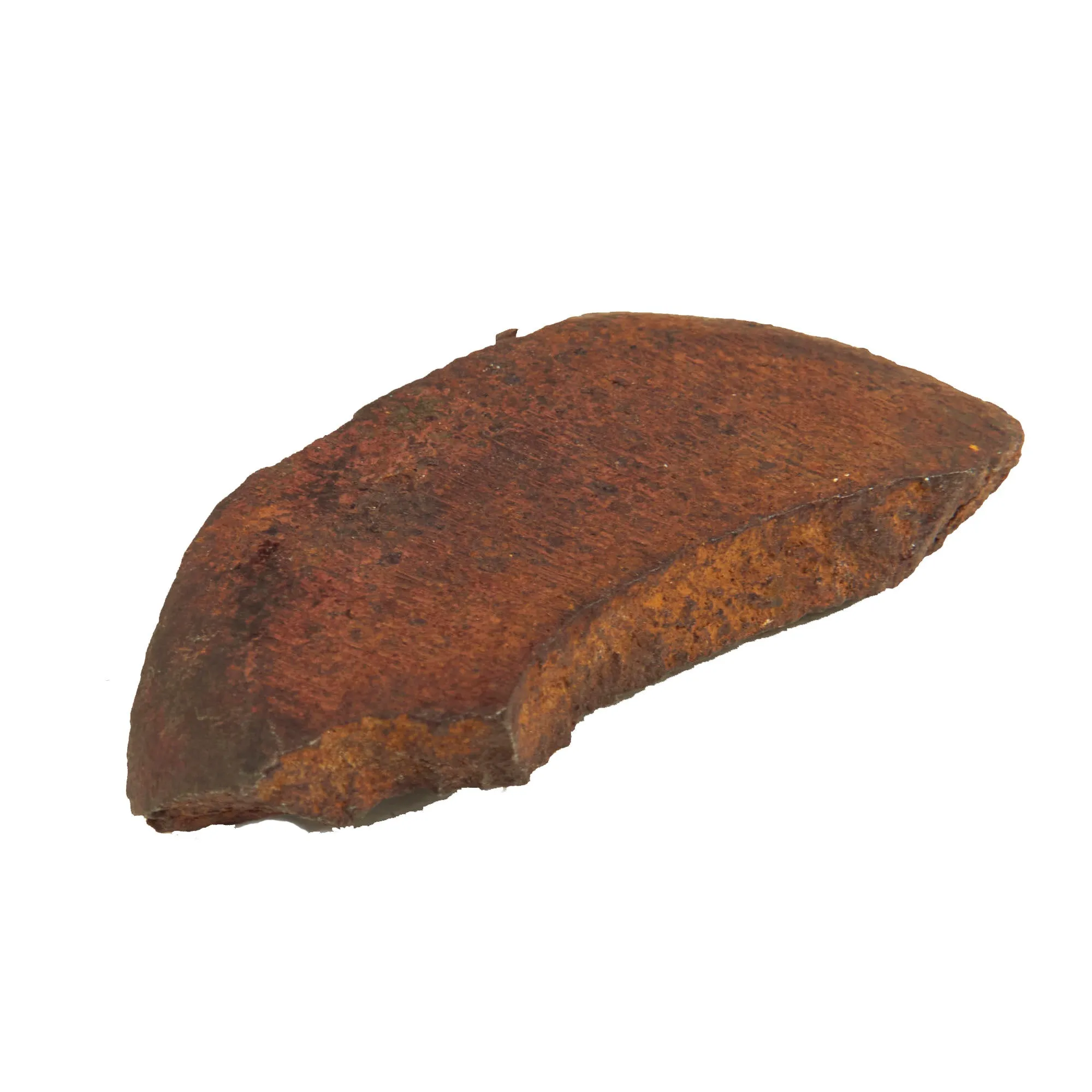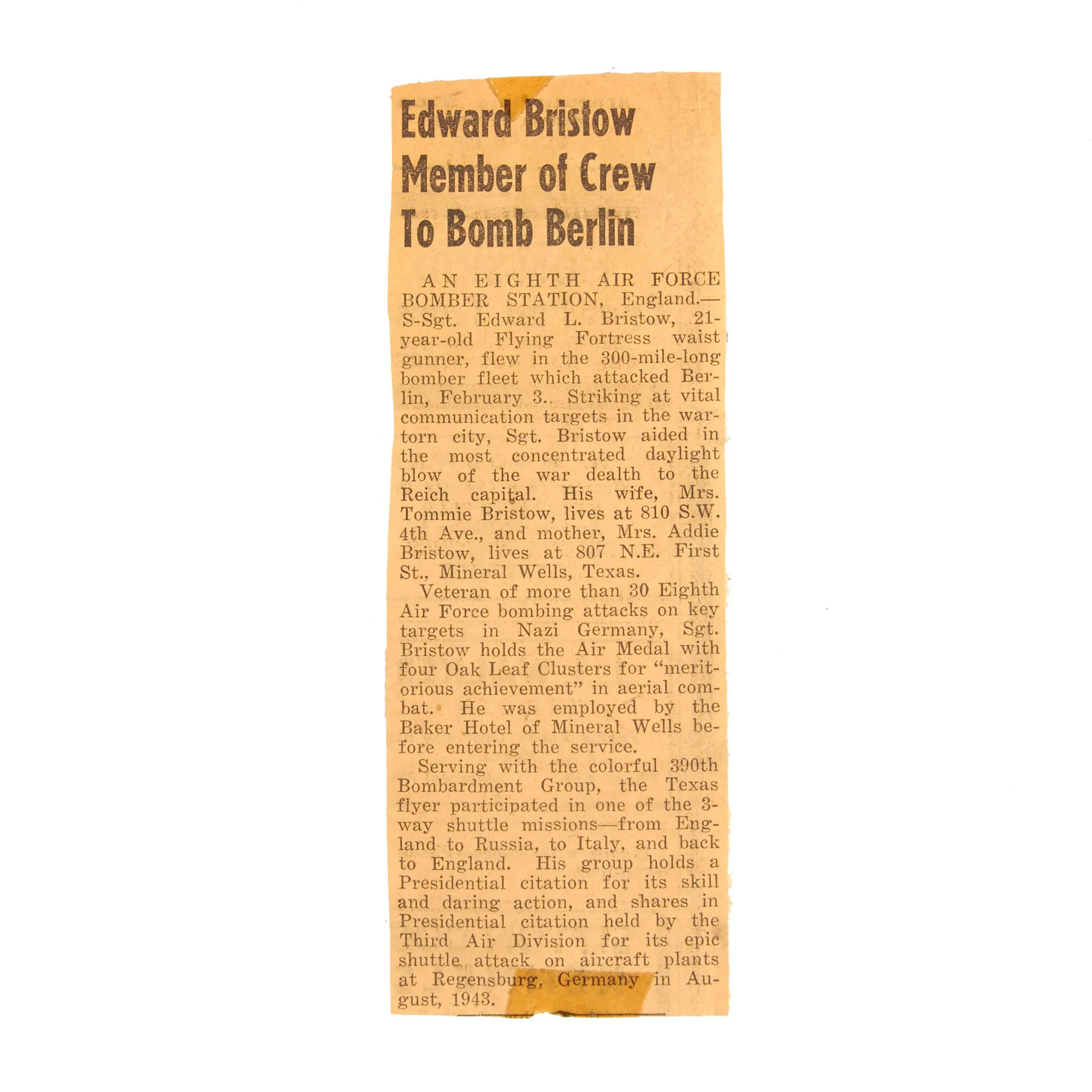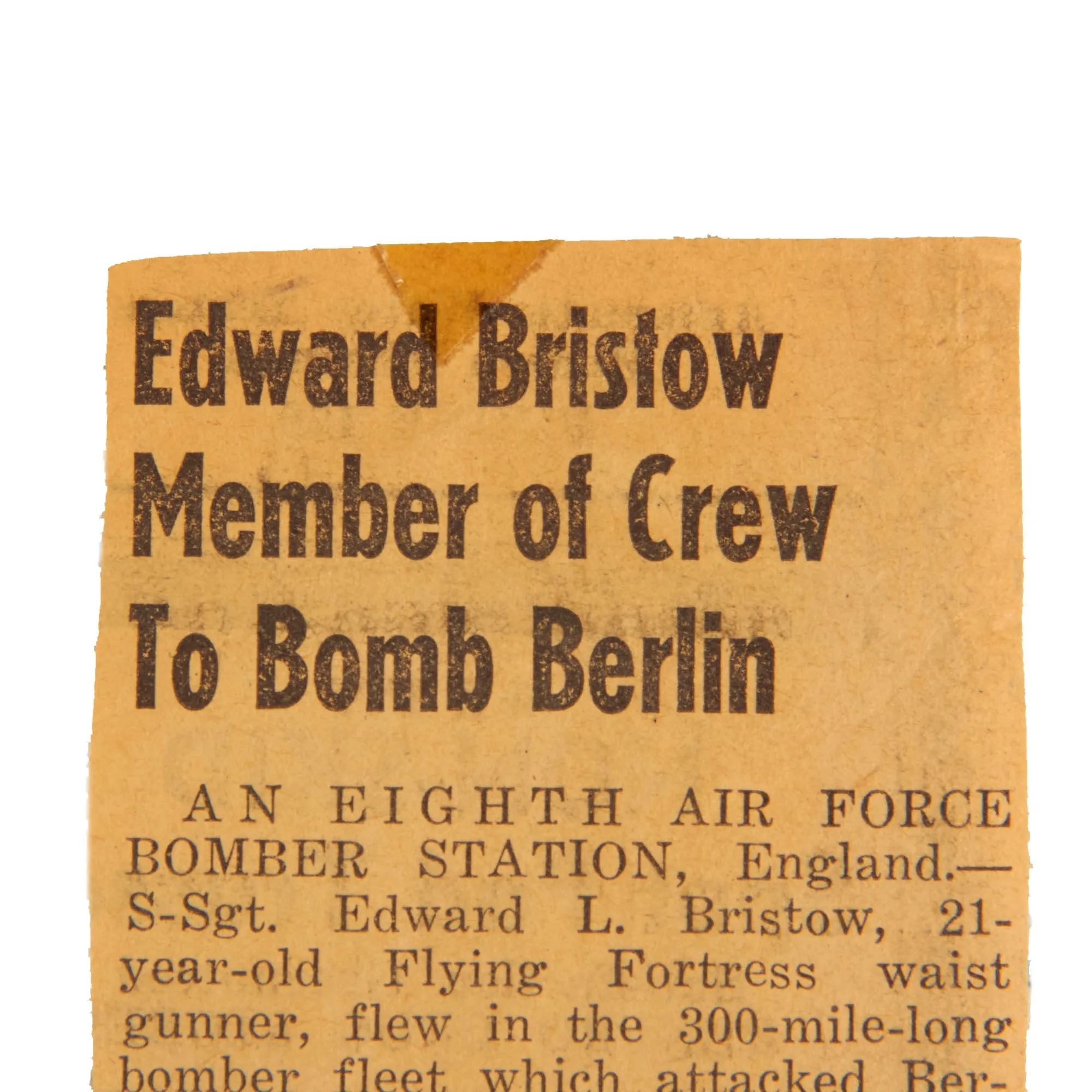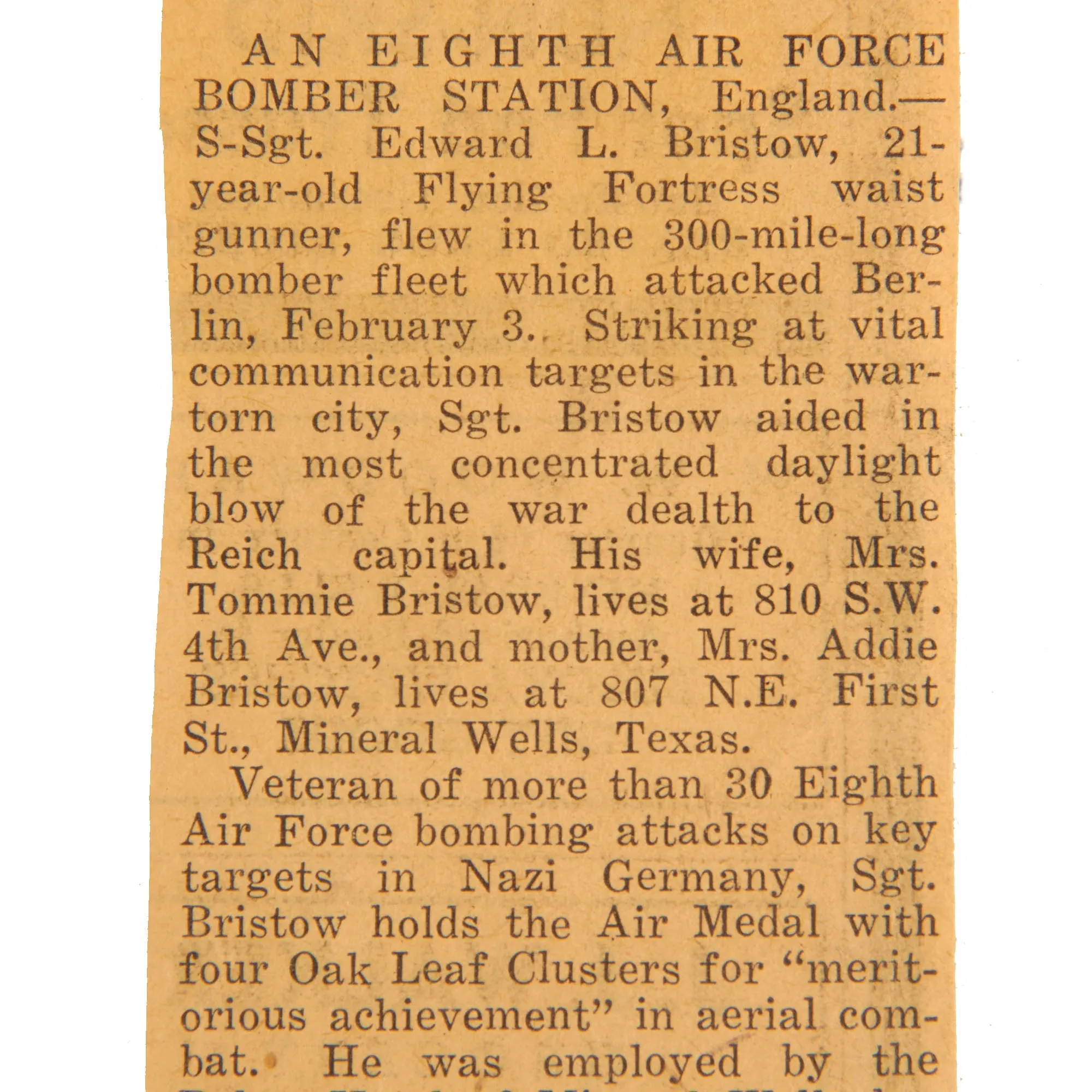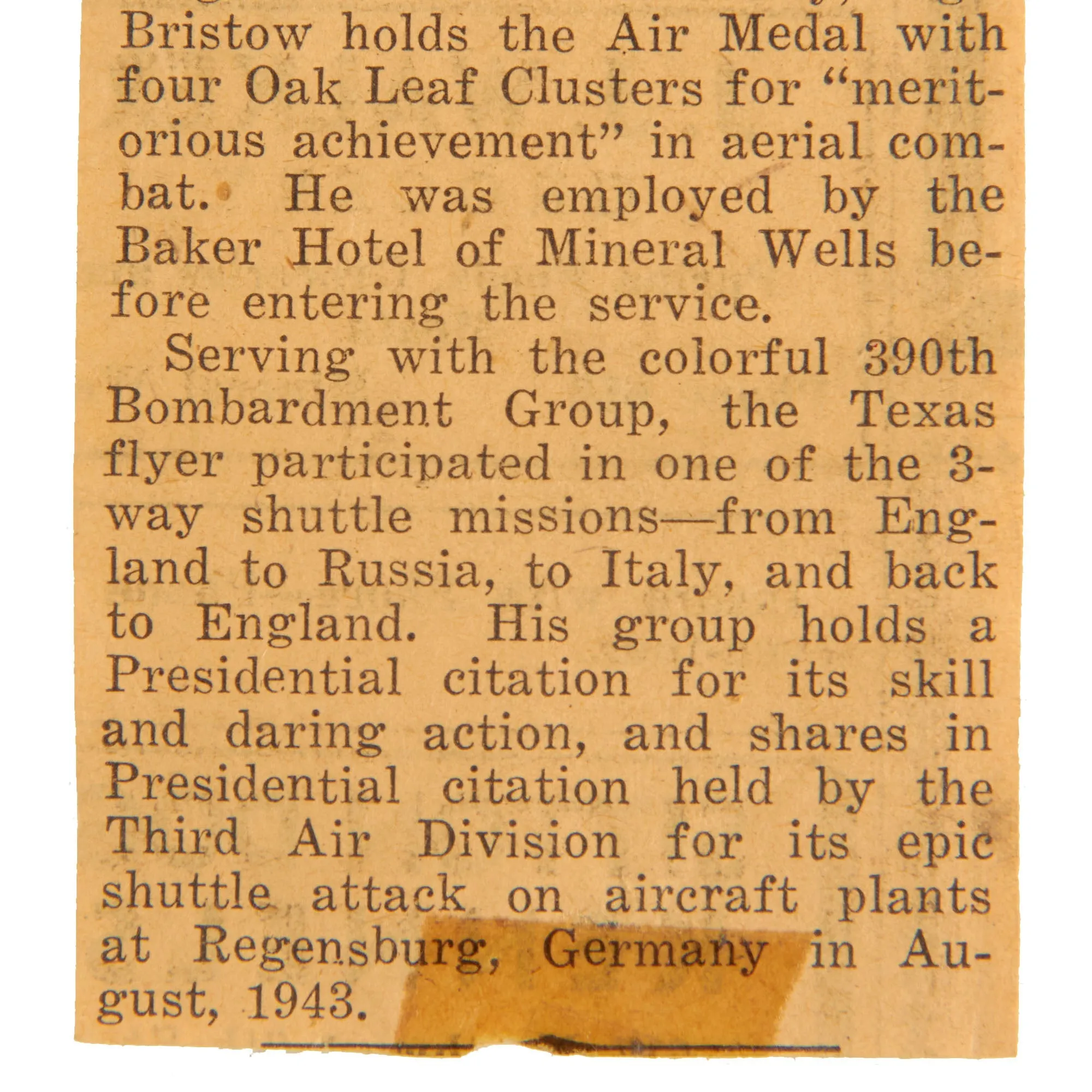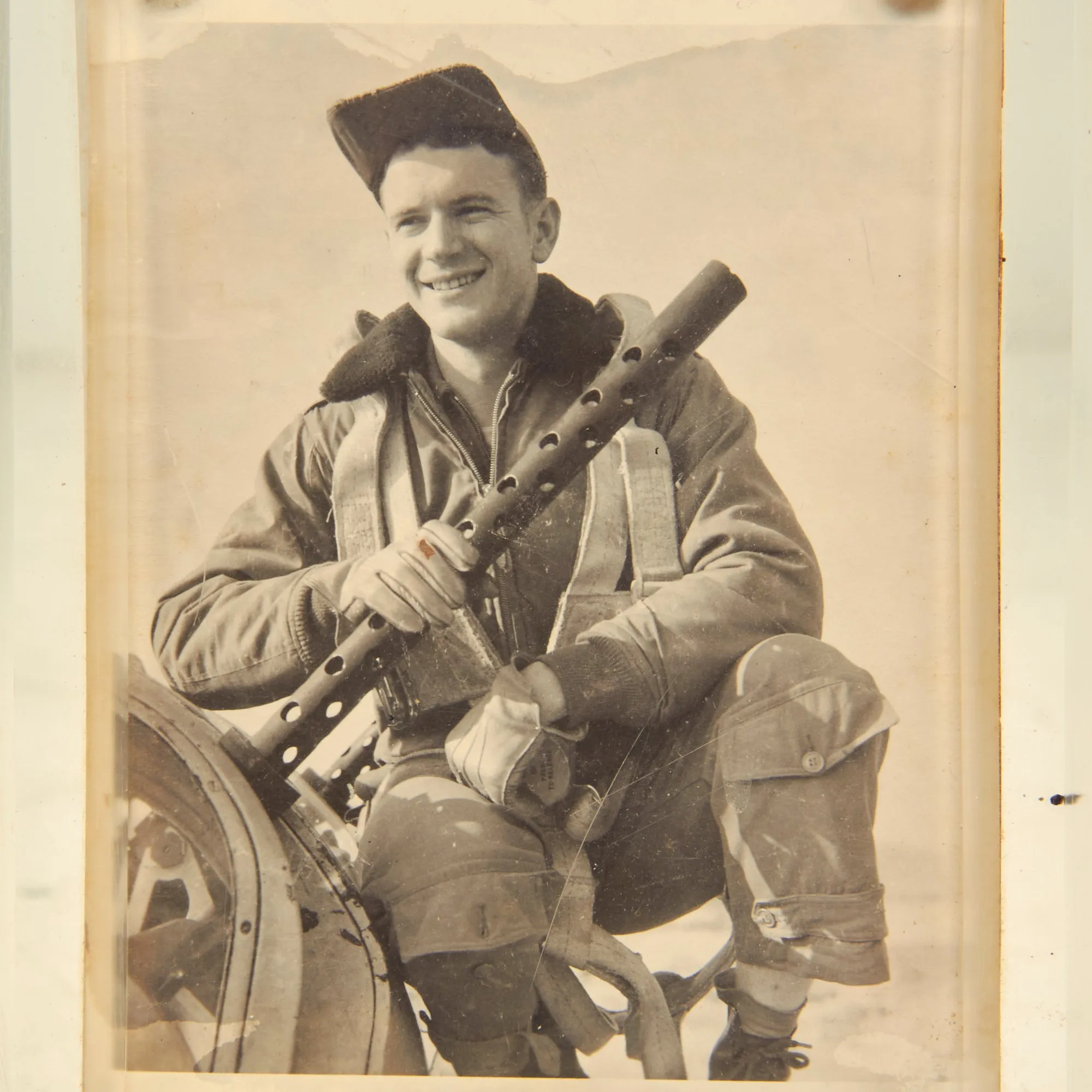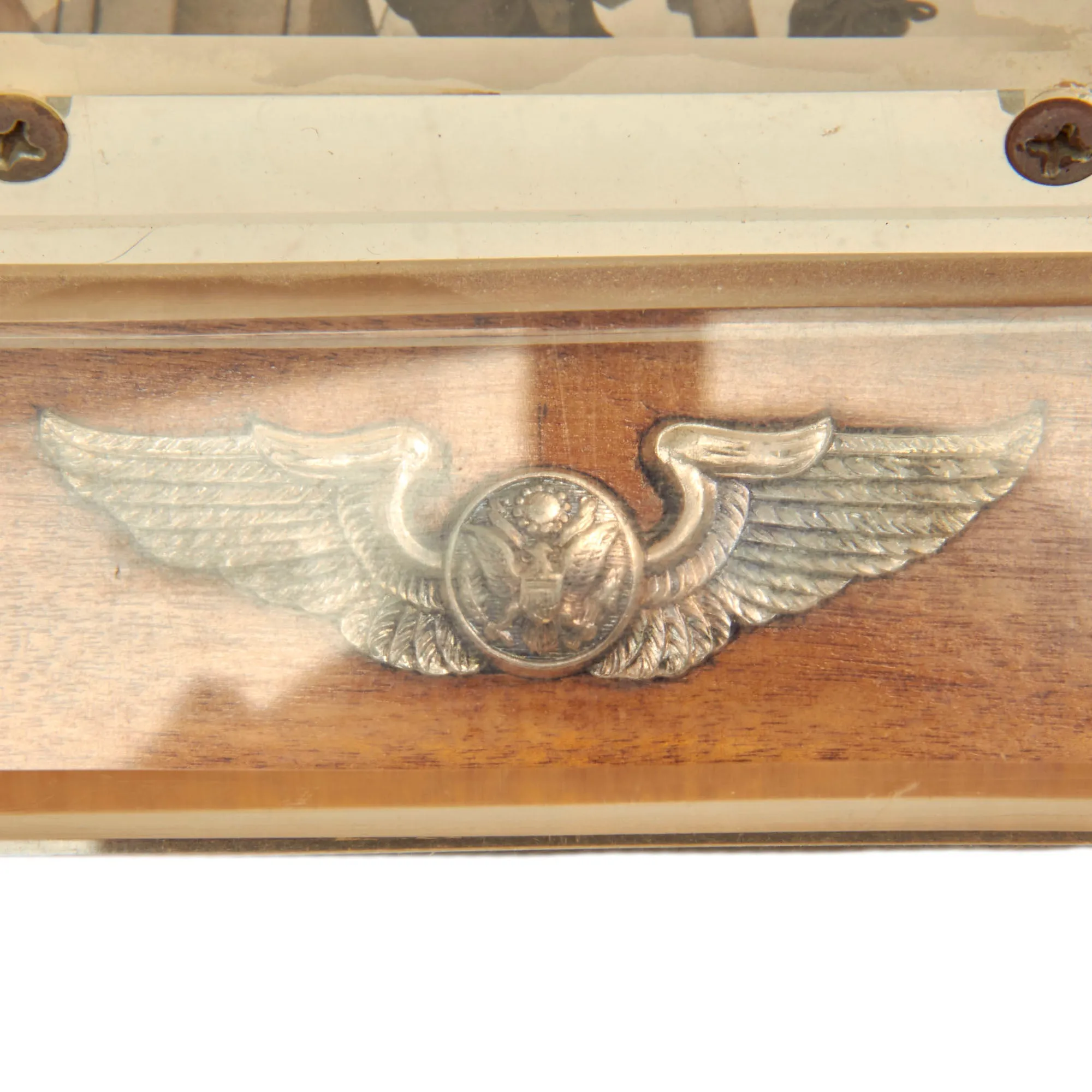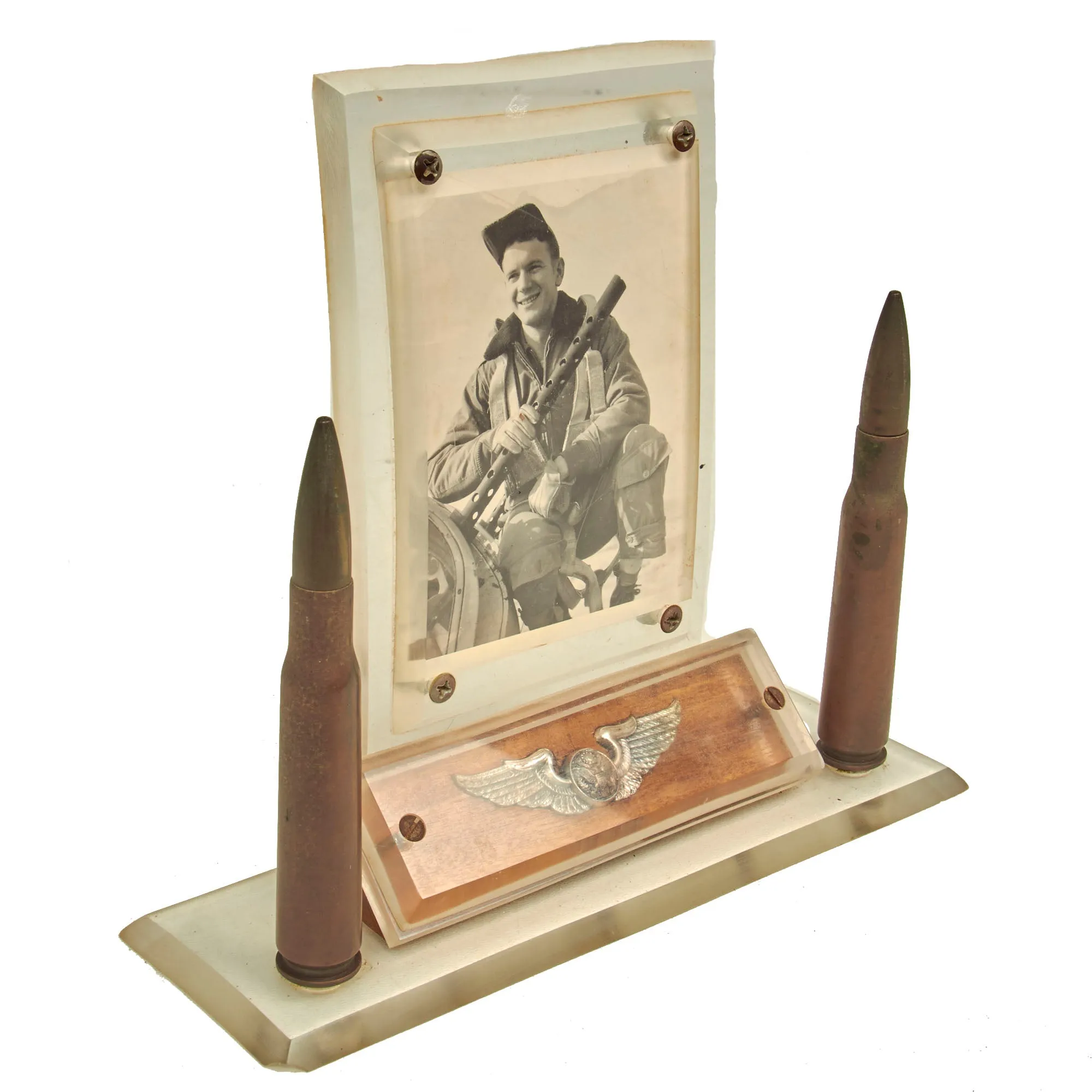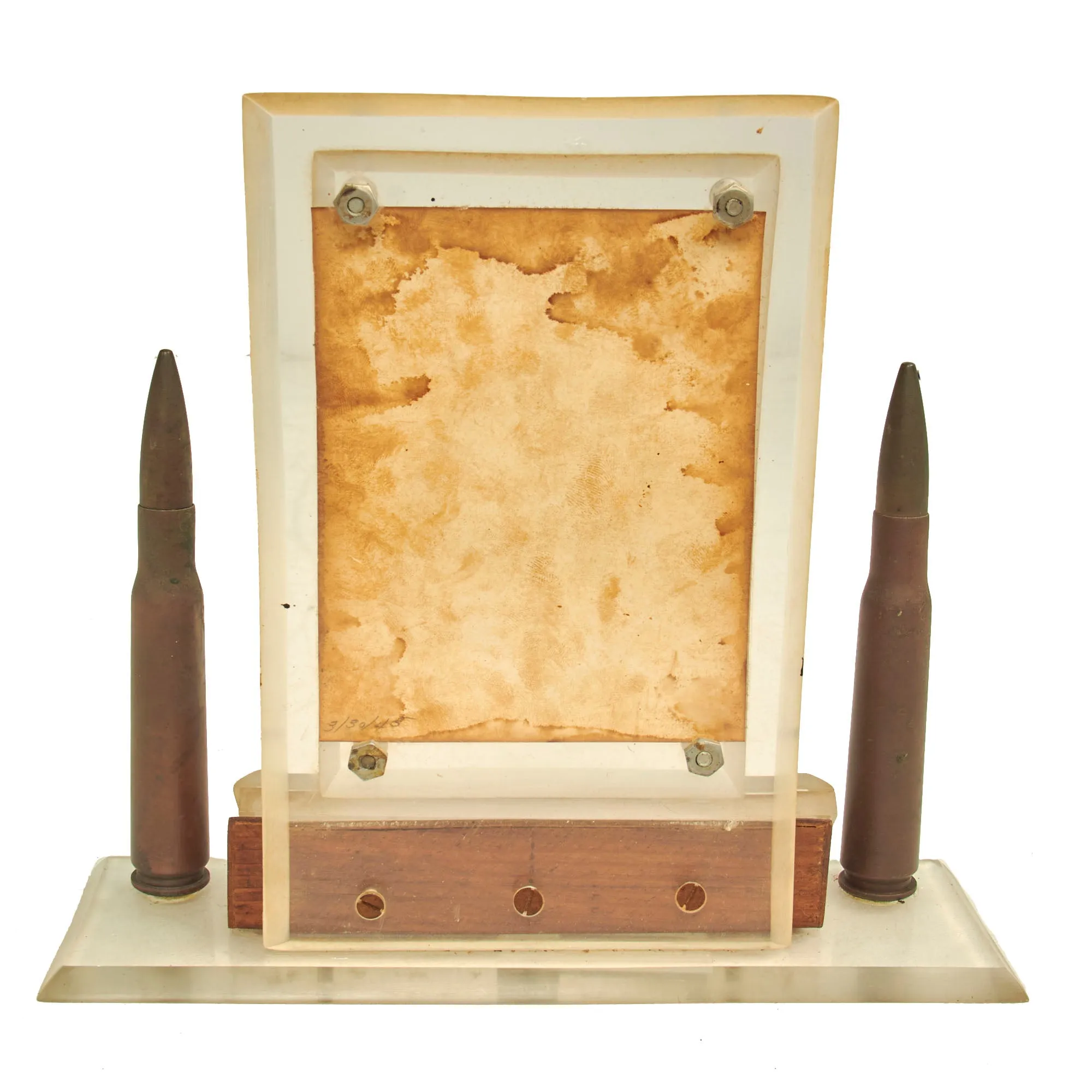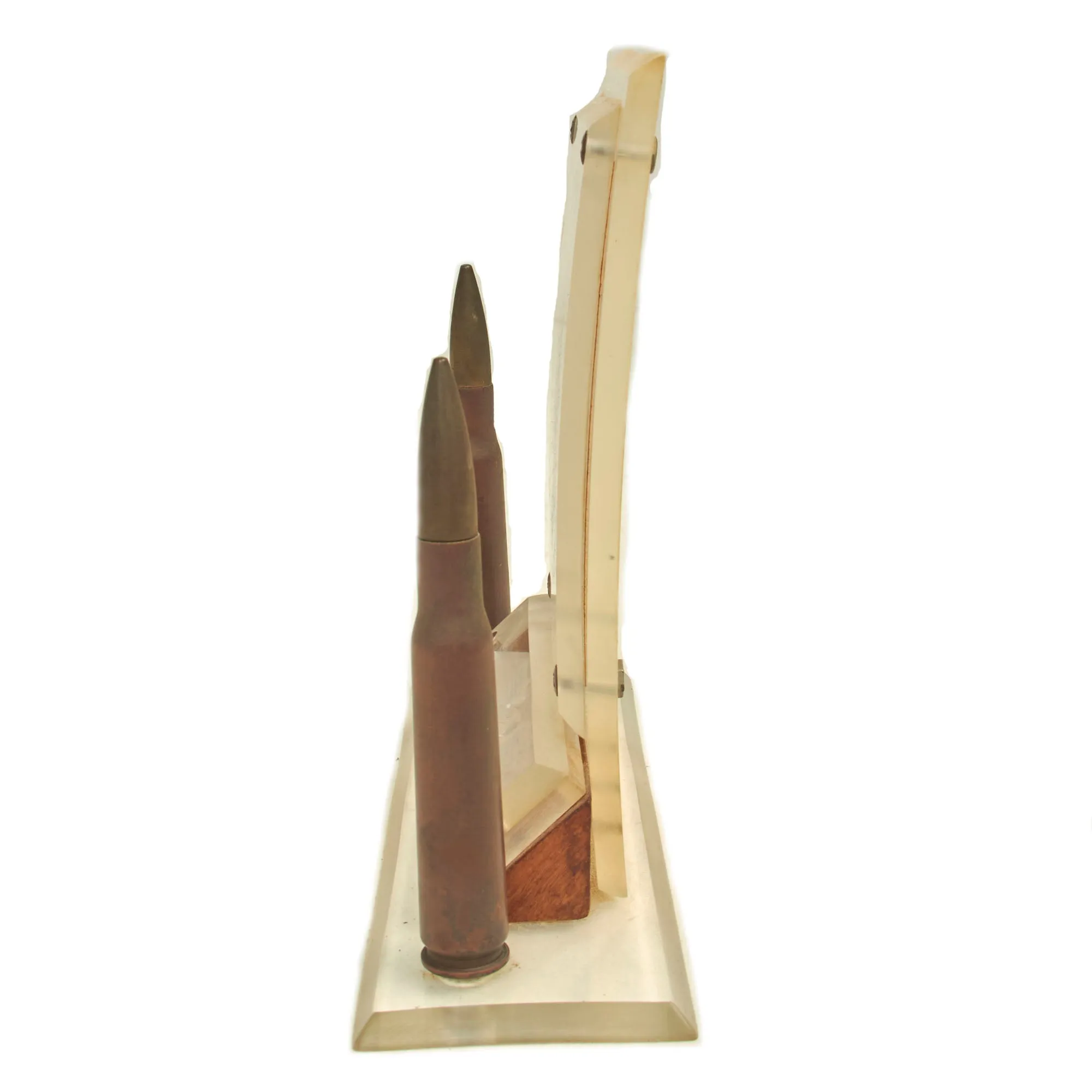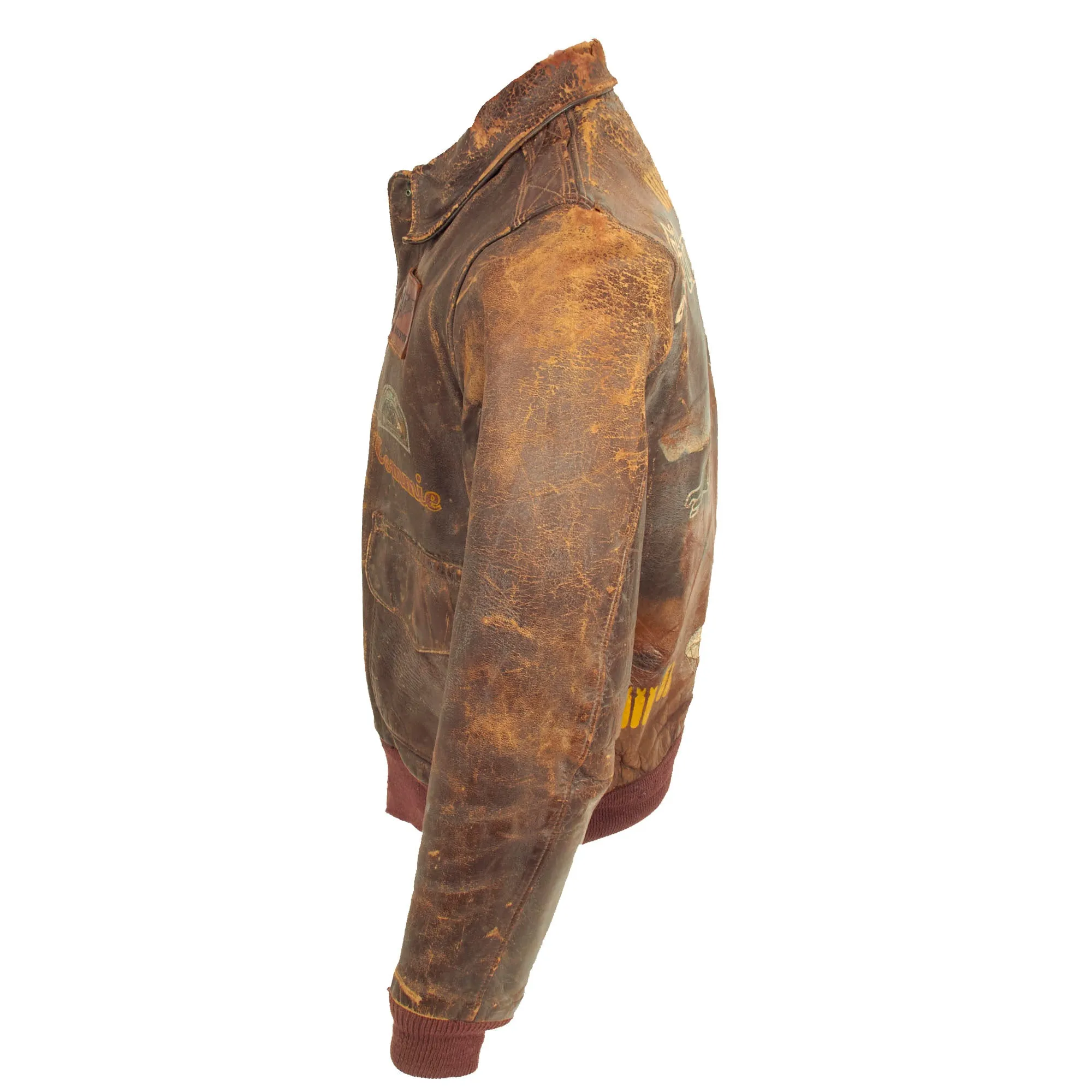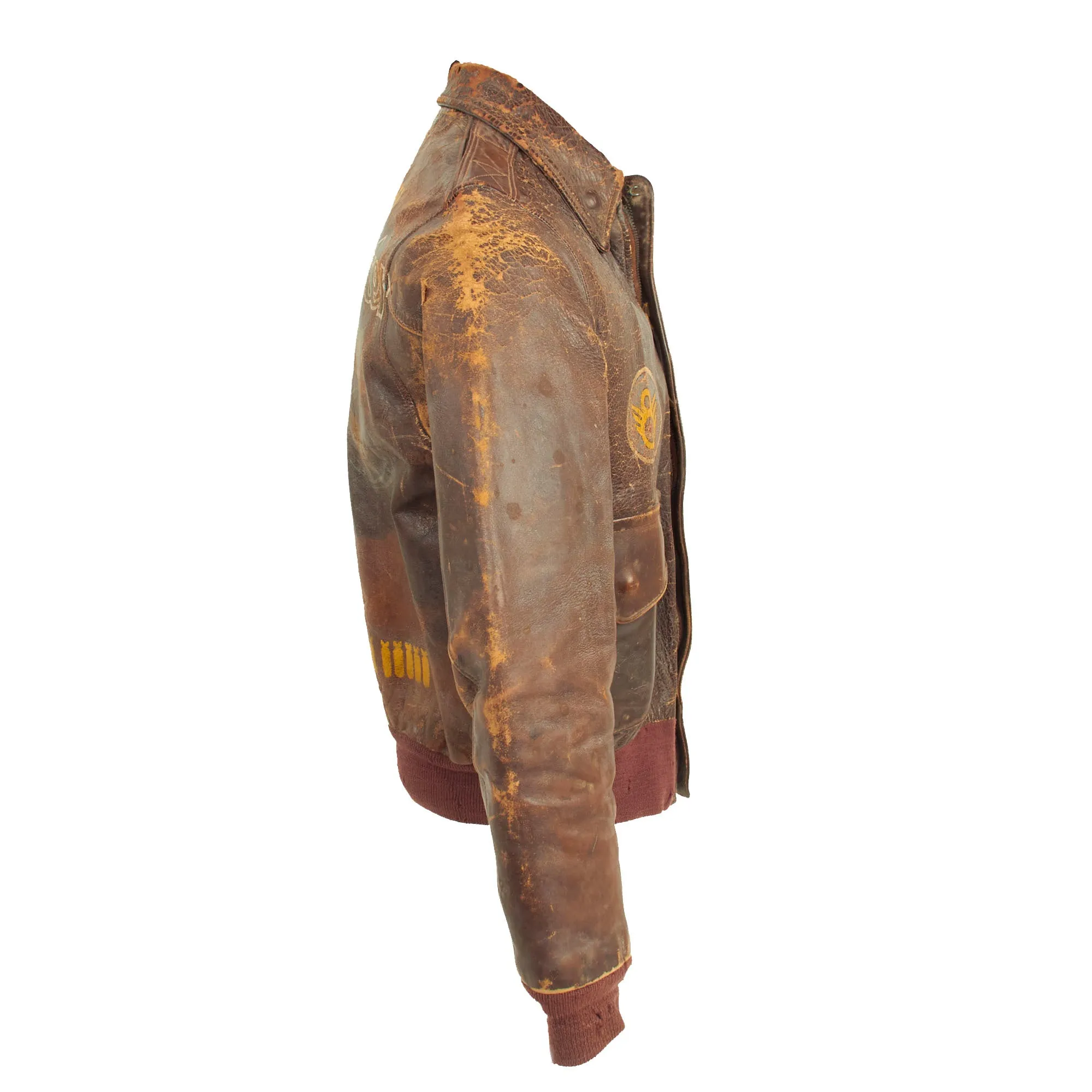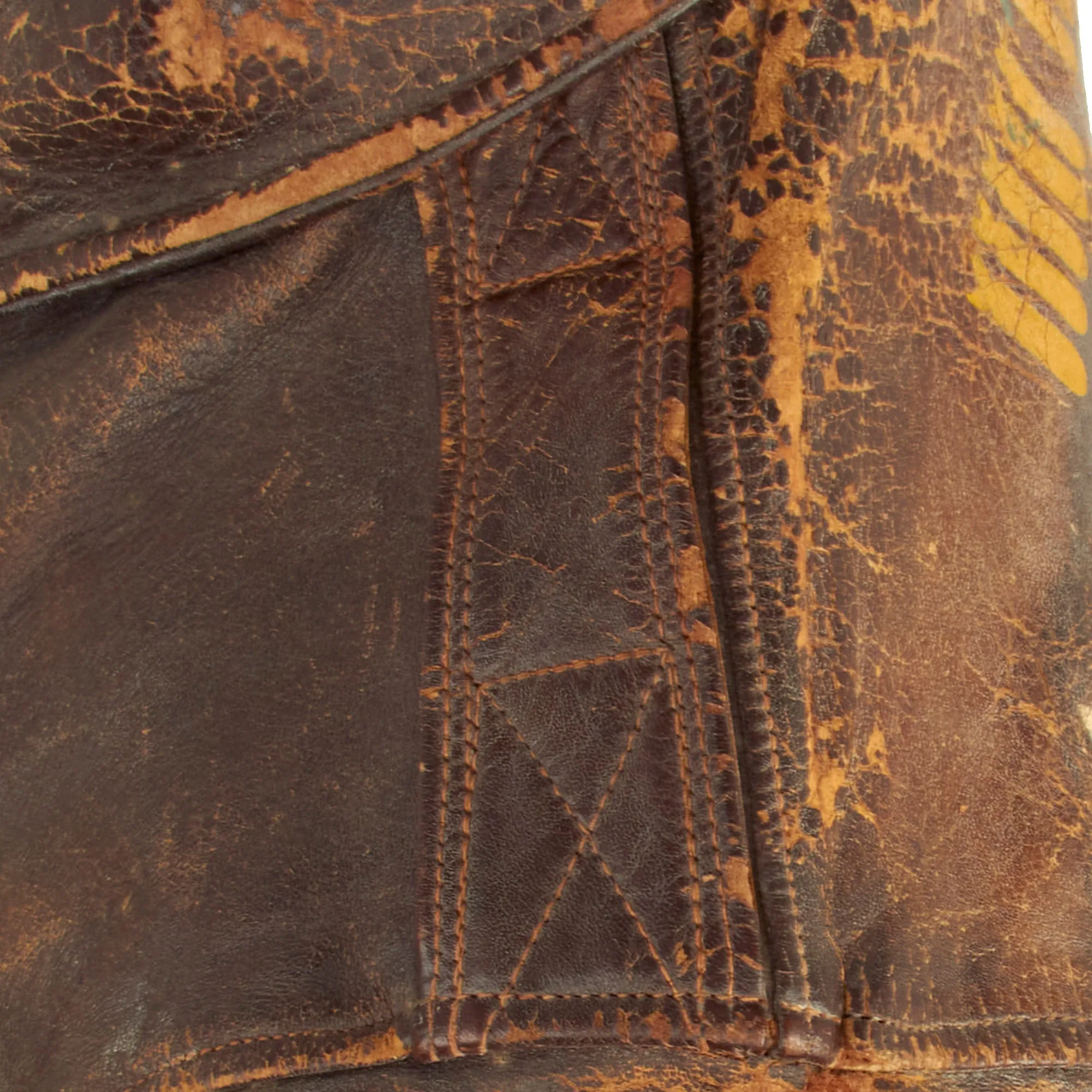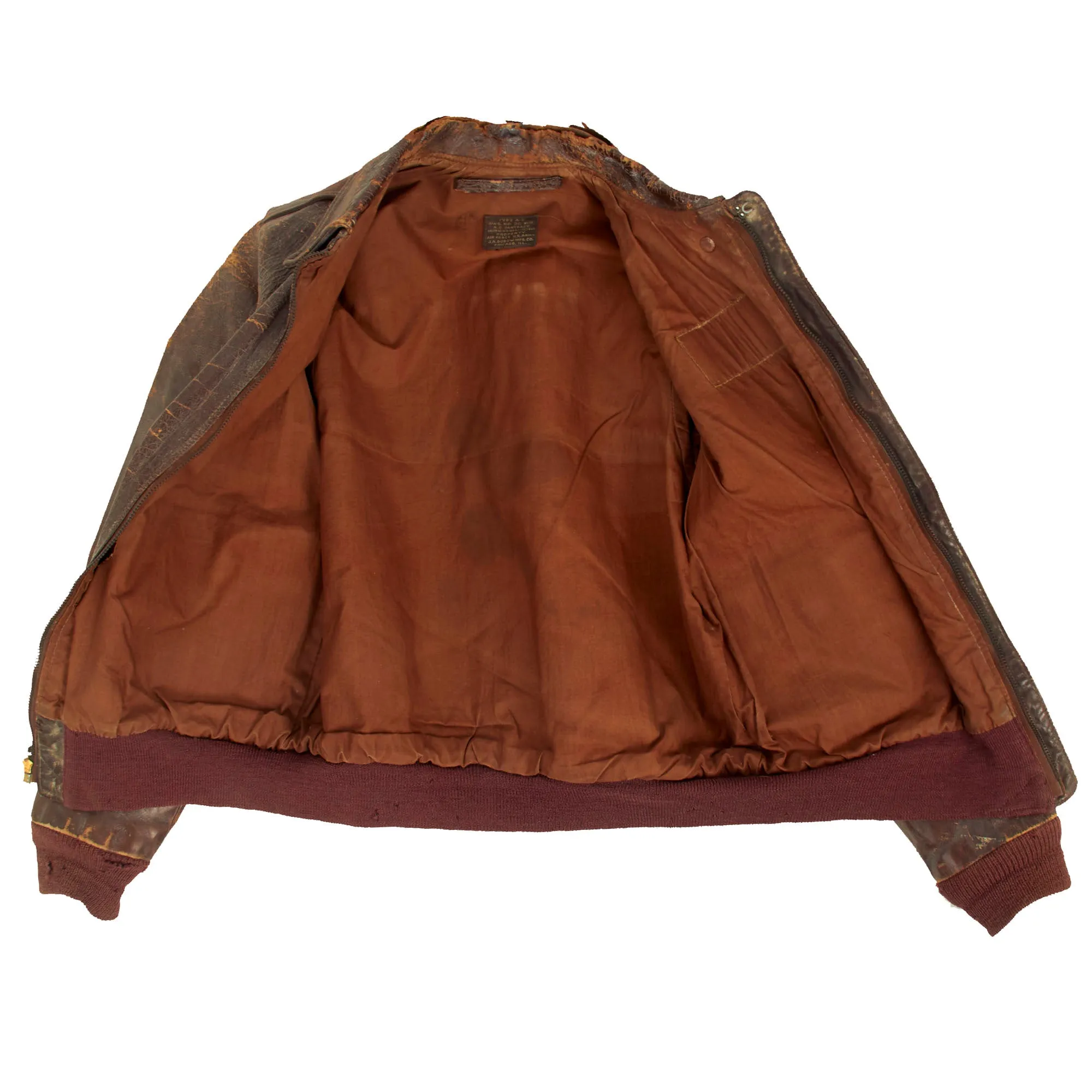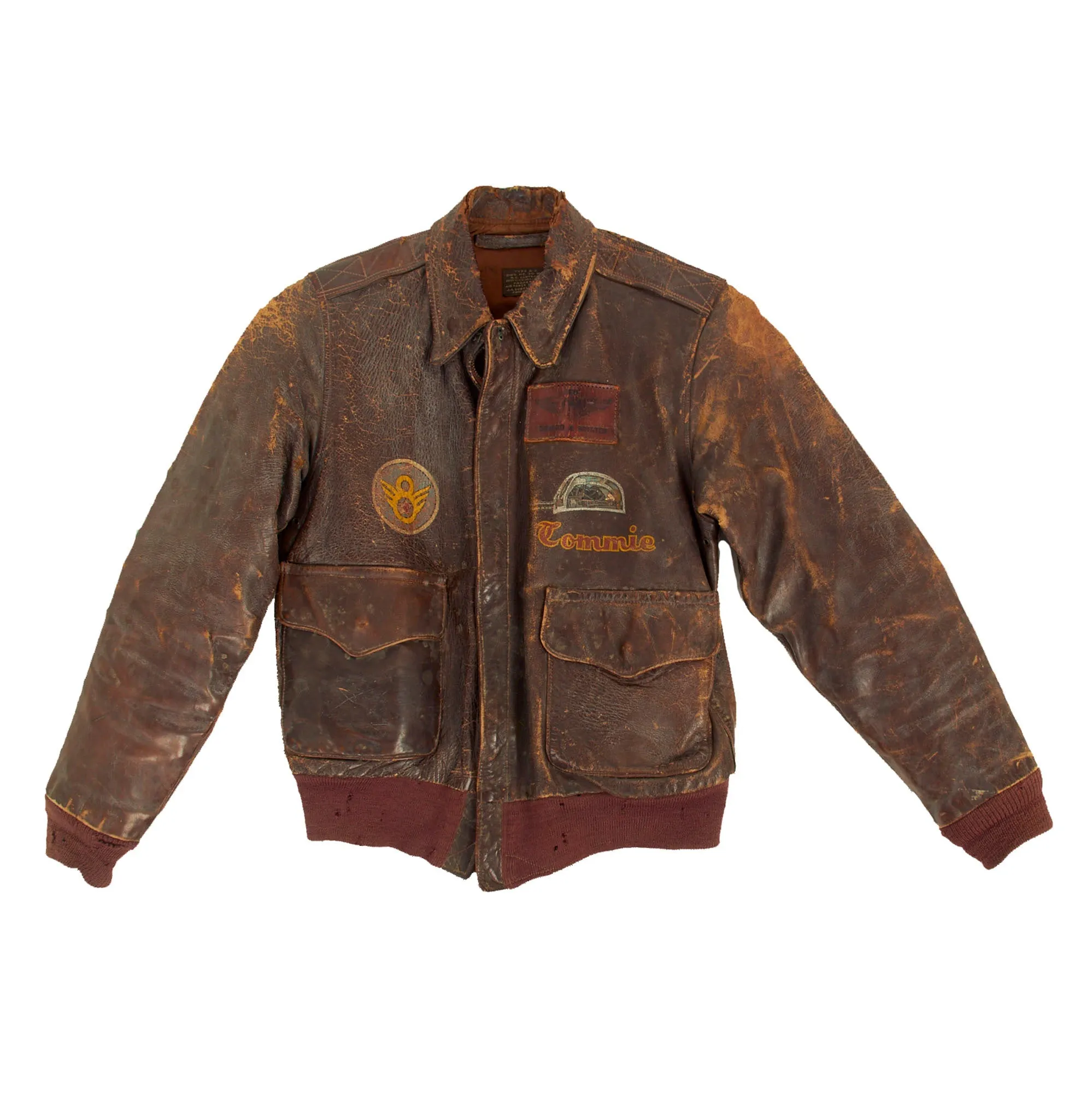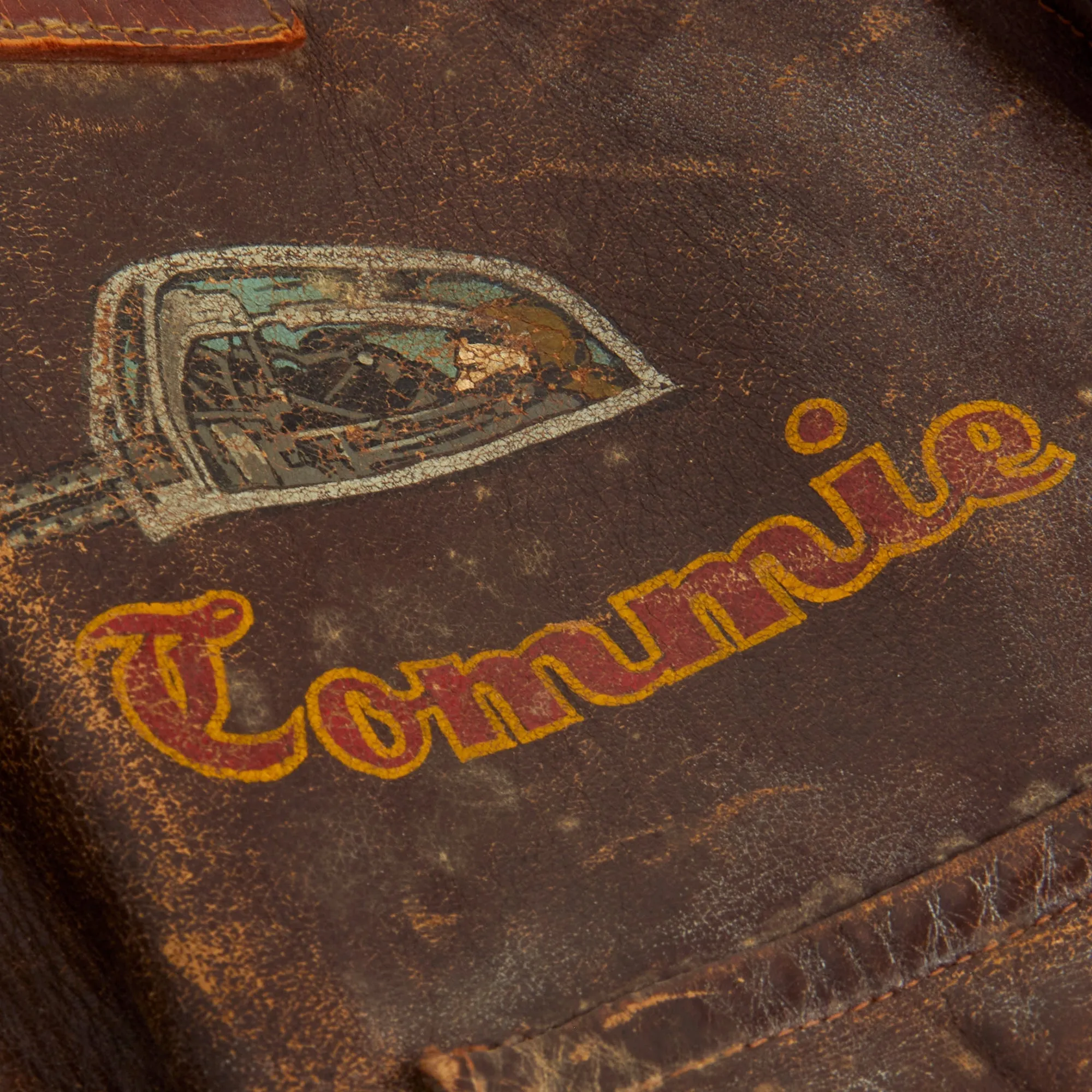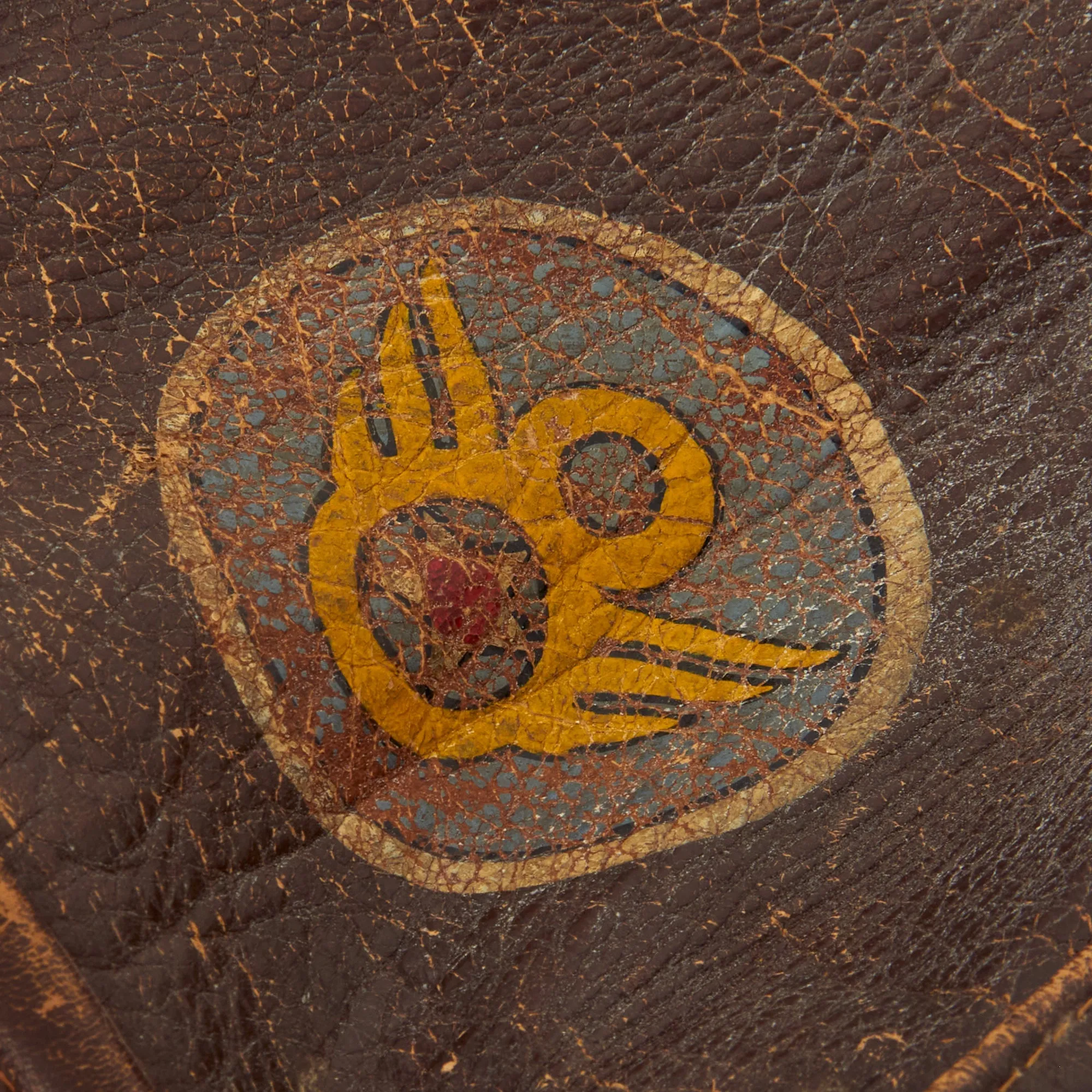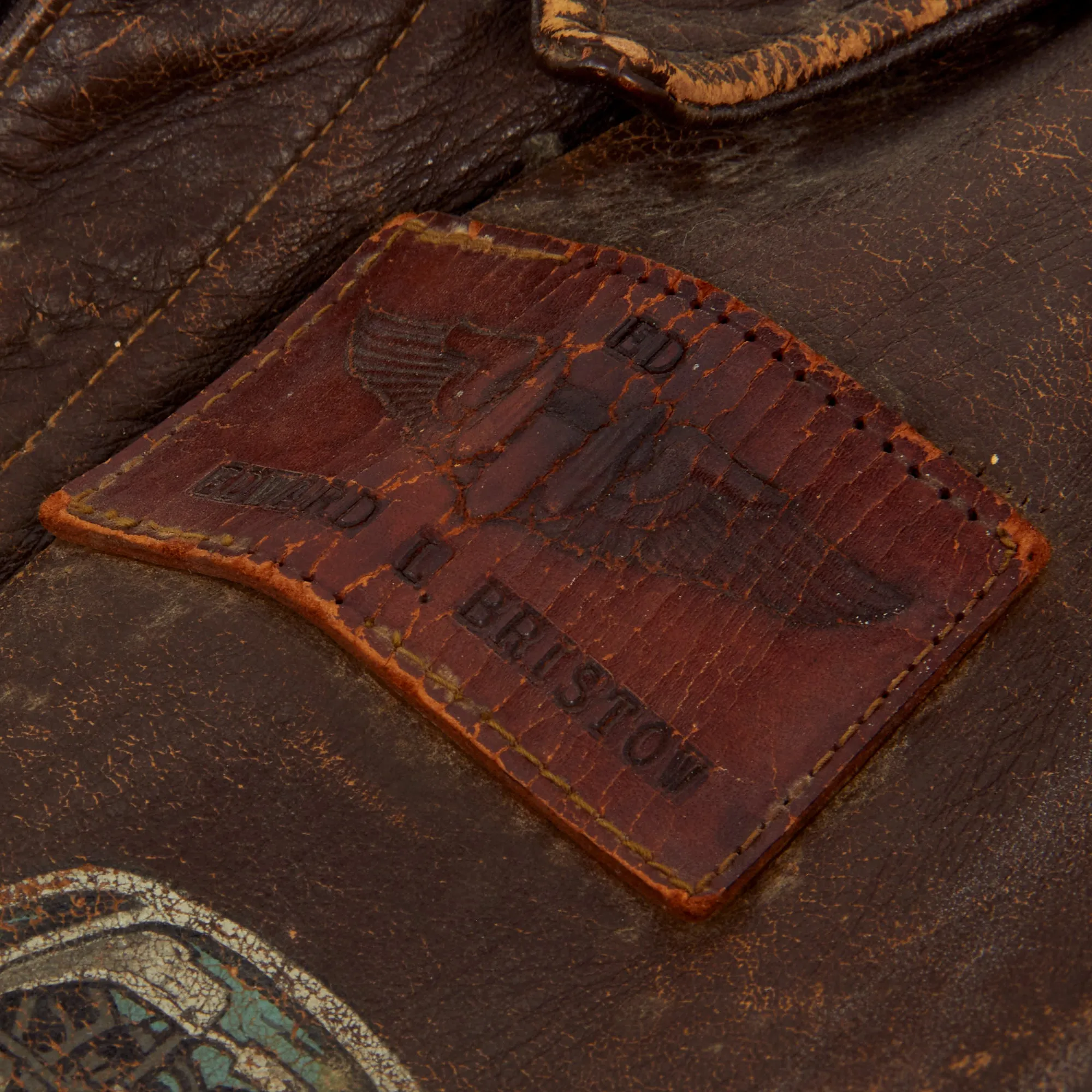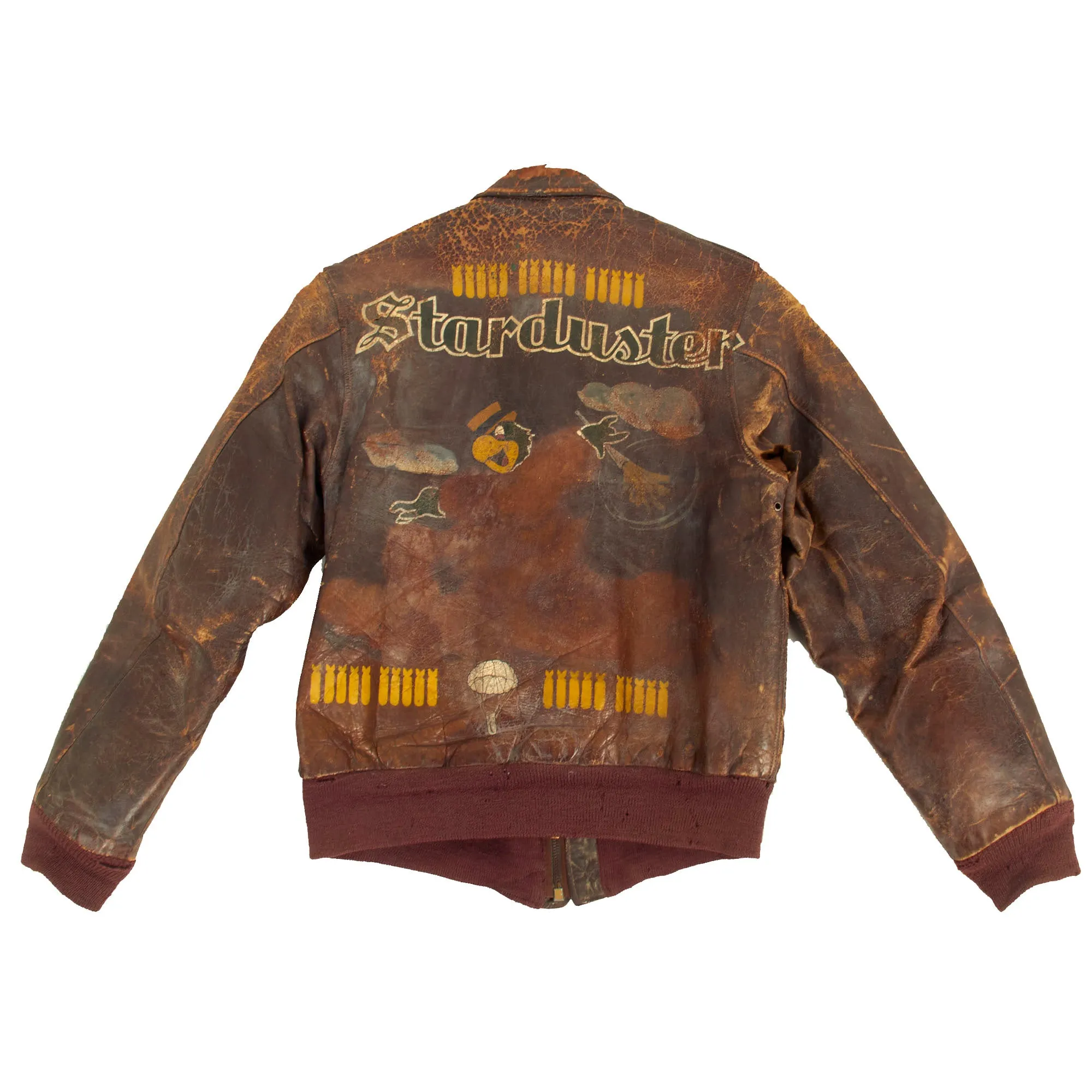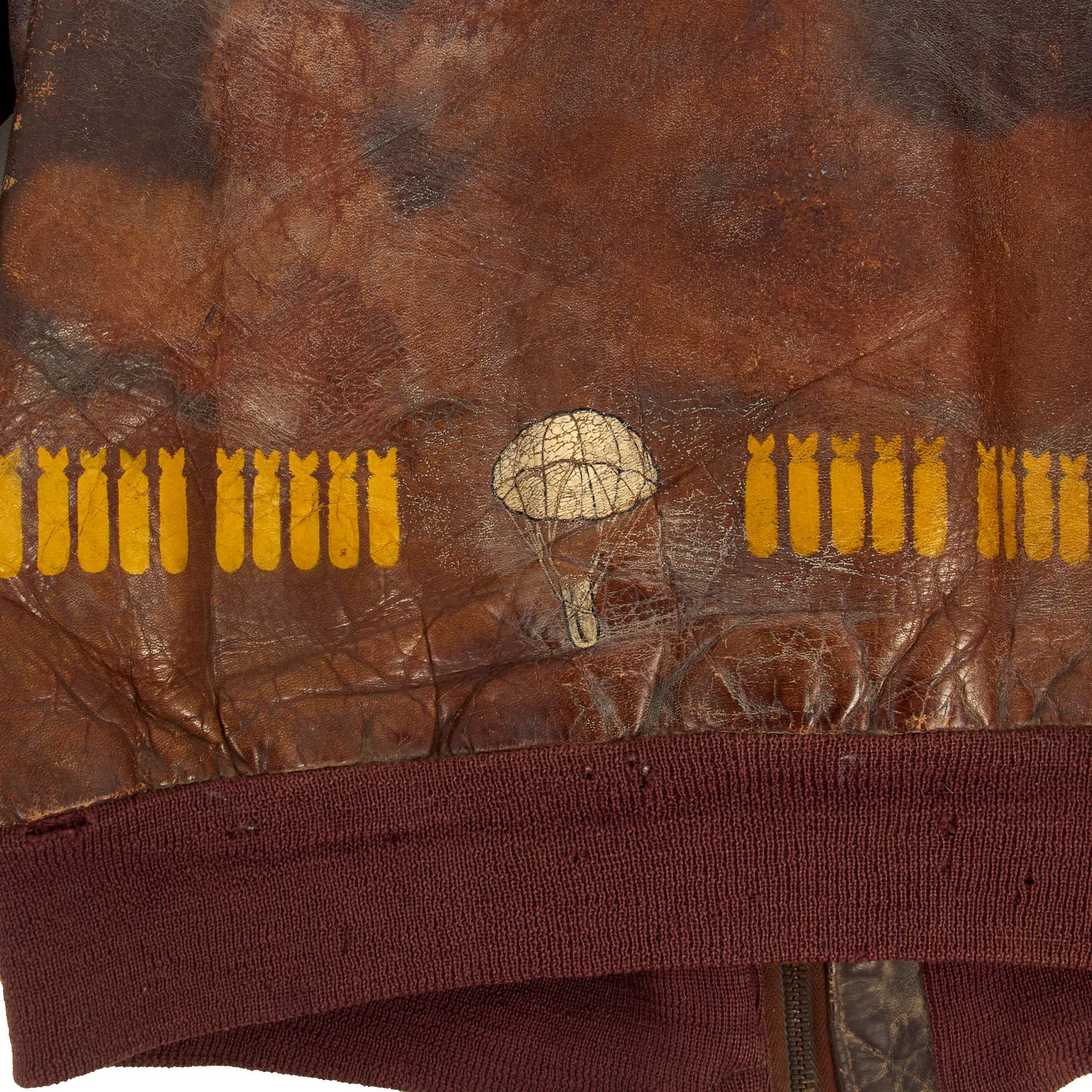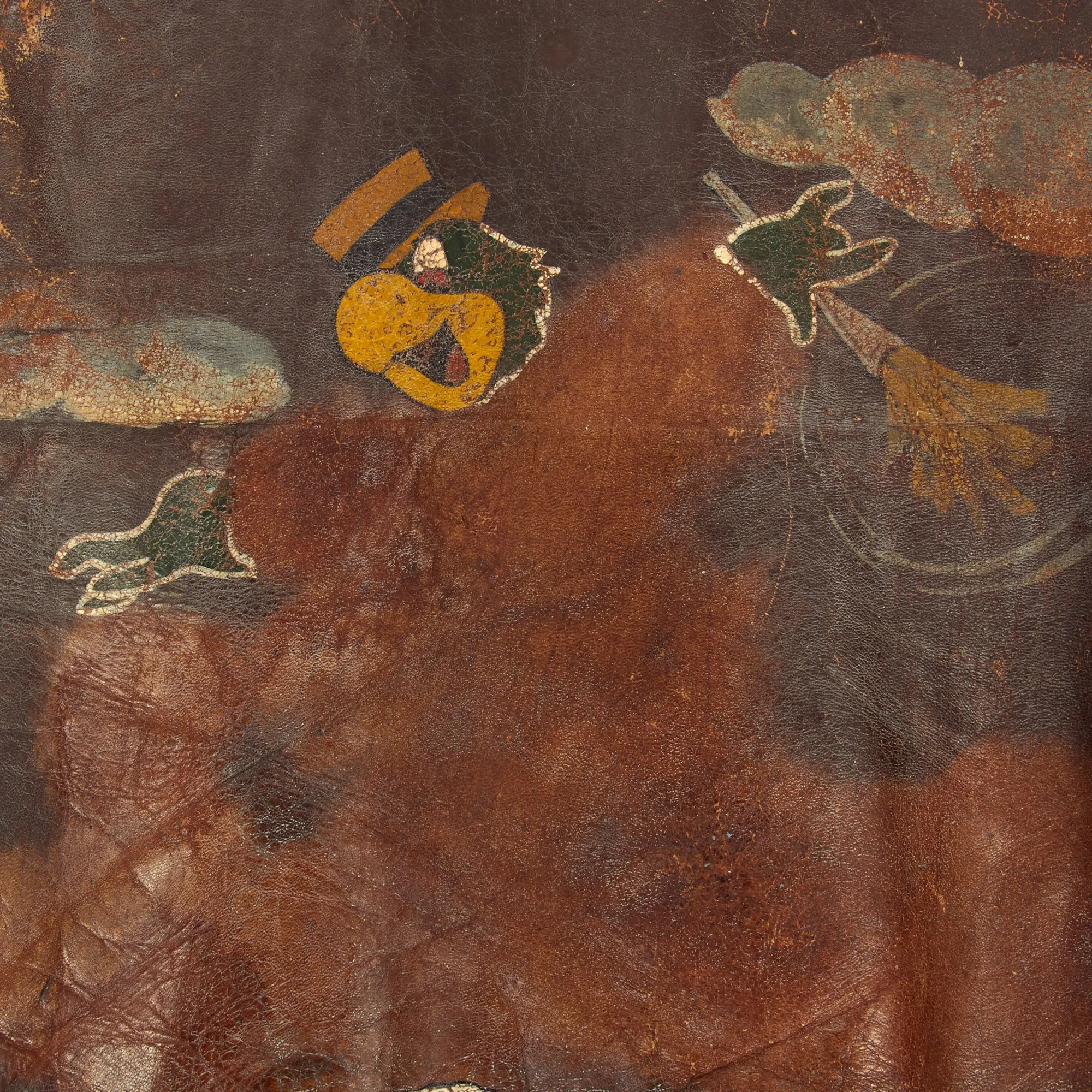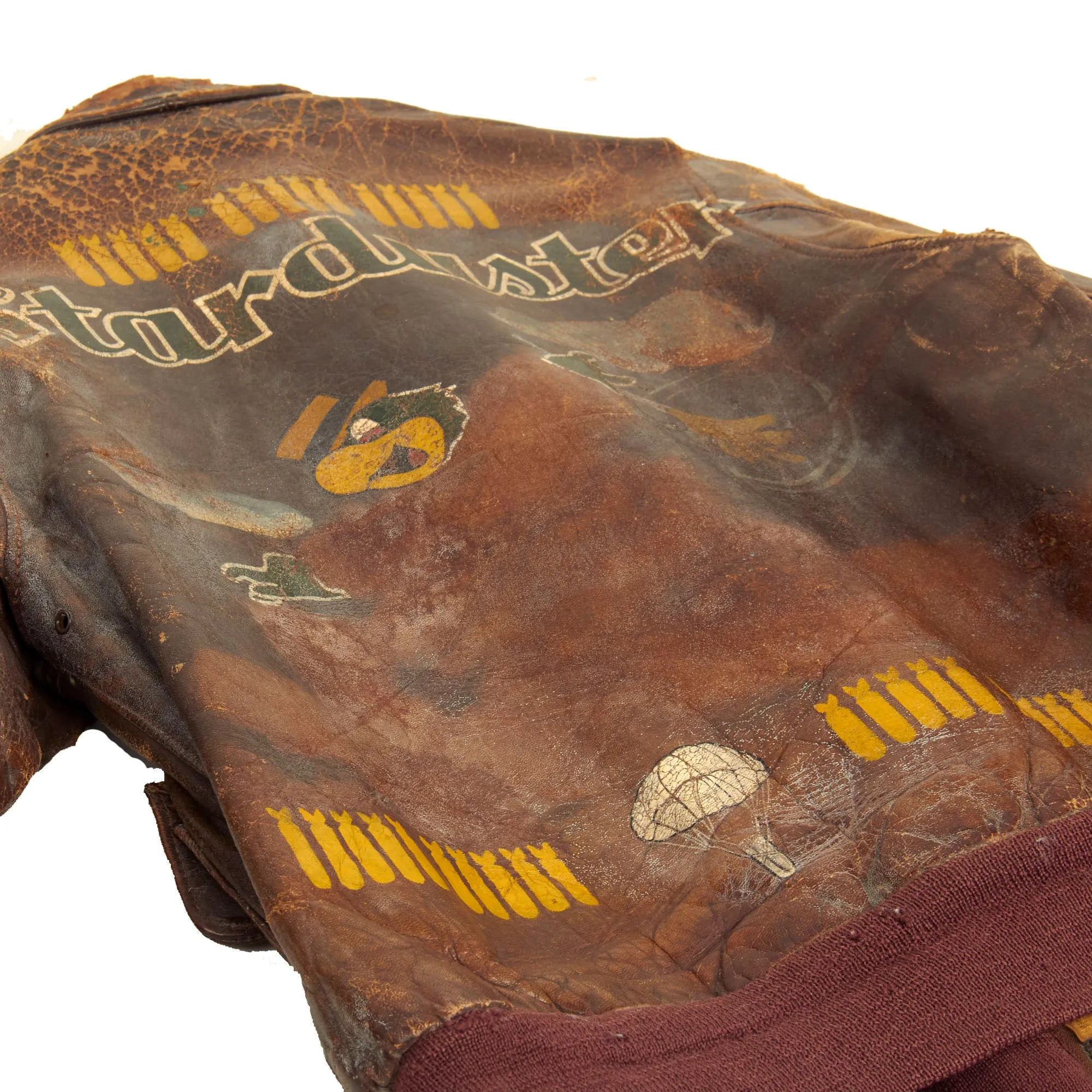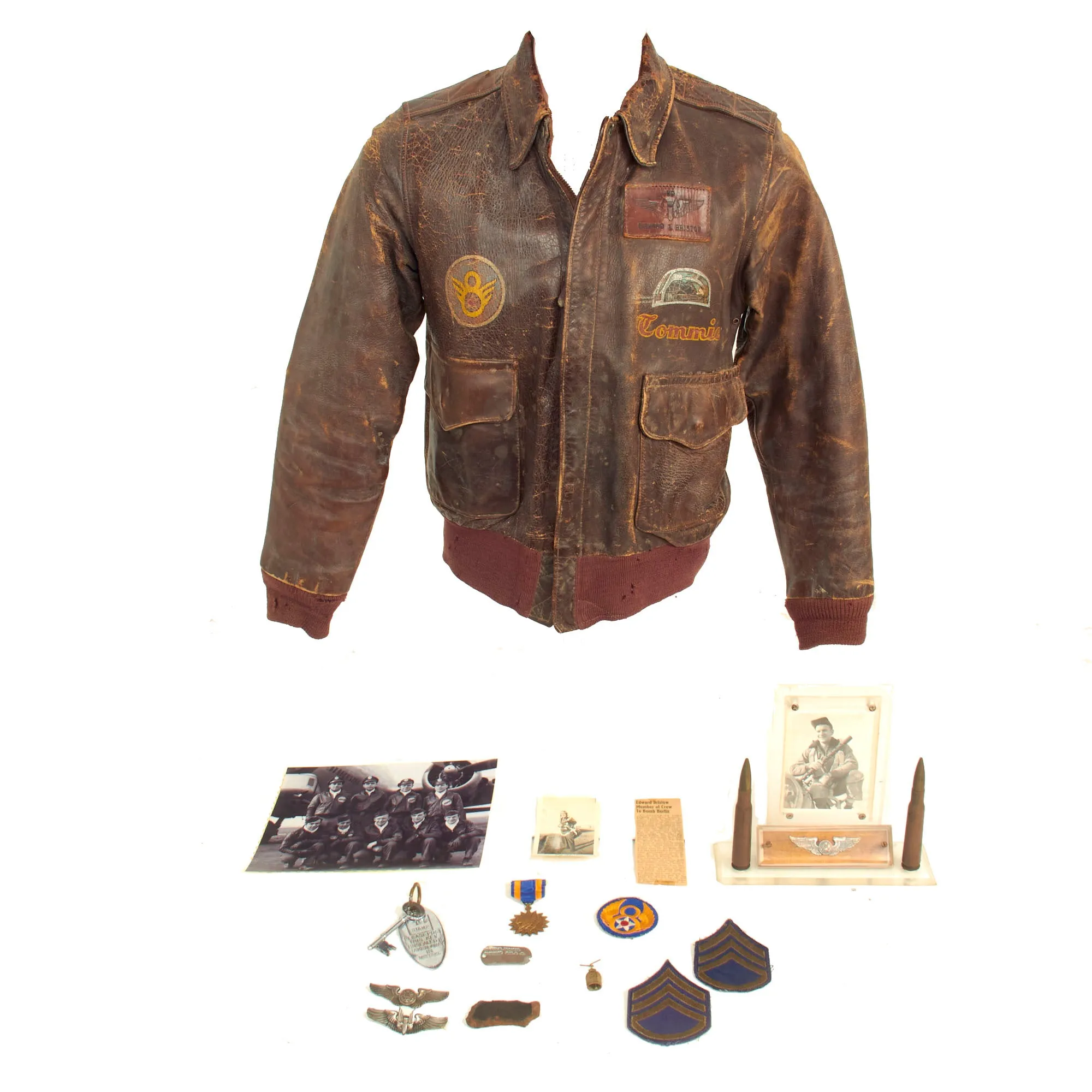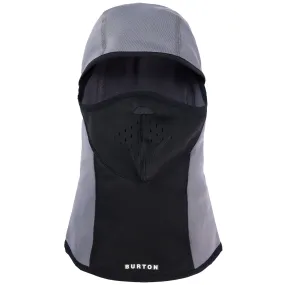Painted WWII American A-2 Flight Jackets have realized unprecedented prices in the past year. For example jackets at Rock Island Auctions sold in 2022 for $32,000 and $23,000 respectively they can be found at this and this . When comparing the Rock Island Auction jackets with the one offered here, one can easily see that our offering is an exceptional value!
Original Items: Only One Grouping Available. This is an incredible grouping featuring a painted leather A-2 flight jacket which belonged to. Staff Sergeant Edward L. Bristow who was an Engineer and Gunner on the B17E named Starduster and was assigned to the 8th Air Force, 390th Bombardment Group, 568th Bomb Squadron.
We have not been able to find much on Staff Sergeant Bristow, but fortunately there is a newspaper clipping included with the grouping that gives us a some insight to his service.
The clipping reads as follows:
EDWARD BRISTOW
MEMBER OF CREW
TO BOMB BERLIN
AN EIGHTH AIR FORCE BOMBER STATION, England.
S-Sgt. Edward L. Bristow, 21 year old Flying Fortress Waistgunner, flew in the 300 mile long bomber fleet which attacked Berlin, February 3. Striking at vital communication targets in the Wartorn city, Sgt. Bristow aided in the most concentrated daylight blow of the war death to the Reich capital.
Veteran of more than 30 Eighth Air Force bombing attacks on key targets in Germany, Sgt Bristow holds the Air Medal with four Oak Leaf Clusters for “meritorious achievement” in aerial combat.
The A-2 jacket is in very good used condition with fantastic hand painted artwork and painted leather insignia. The left chest features an incredible stamped leather name tag with Aerial Gunner wings with a stunning image of a painted engineer gunner top turret beneath it and beneath that is the name Tommie painted, which is the name of his wife. The right side of the jacket features a painted 8th Army Air Force insignia. The back of the jacket features a large image of of a faded crow in what appears to be clouds. Above the image of the bird is 15 yellow bombs with STARDUSTER painted beneath. At the bottom is an additional 20 bombs, totaling 35 combat missions he was on.
Jacket is in approximate size US 36 and has retained all original components including original knit waist band and sleeve cuffs, something we often see replaced on A-2 jackets that saw extensive service. Also original is the TALON brand zipper which is still functional.
The interior lining does have tearing and stitching loss present, so do handle it with care. Also present on the interior lining is the original data tag that reads:
TYPE A-2
DWG. NO. 30-1415
A.C. CONTRACT
ORDER NO. W33-038 A.C.-1755(11631)
PROPERTY
AIR FORCE U.S. ARMY
J.A. DUBOW MFG. CO.
CHICAGO, ILL.
Also Included In The Grouping:
- Staff Sergeant Bristow's Dog Tag
- 4 ⅜” x 2 ¾” Image of Bristow in Kingman, Arizona 1943 with Parachute attached
- Copy of Photo of Bristow and his crew infront of Starduster.
- Plexiglass Trench Art Style Picture Frame With Picture of Bristow Posing With Turret, Aircrewman Wings and x2 .50 Caliber Rounds. 8 ¼” x 9 ¼”.
- x2 Ssgt Chevrons
- 8th Army Air Force Patch
- Unmarked Air Medal
- Piece of Shrapnel
- Skeleton Key and Tag From Strand Palace Hotel London
- San Michele “Goodluck” Bell
- Aerial Gunner Wings
- Air Crew Wings
568th Bomb Squadron
The squadron was first activated at Geiger Field, Washington in January 1943 as the 568th Bombardment Squadron, one of the four original squadrons of the 390th Bombardment Group. A cadre from the squadron and group went to the Army Air Force School of Applied Tactics at Orlando Army Air Base, Florida for advanced training. The 390th Group was the first to go through this training process, which was followed by later combat groups. The squadron was filled out with Boeing B-17 Flying Fortress heavy bombers beginning the following month and trained at Geiger and at Great Falls Army Air Base, Montana until early July 1943. The squadron's air echelon ferried their B-17s to England via the north Atlantic ferry route, with the first bombers arriving on 13 July. The ground echelon departed for Camp Shanks and the New York Port of Embarkation, sailing on the USAT James Parker on 17 July, reaching England ten days later.
The squadron arrived at its combat station, RAF Framlingham in July 1943 and flew its first combat mission on 12 August against targets in the Ruhr. Five days later, the squadron attacked the Messerschmitt factory at Regensburg, for which it earned its first Distinguished Unit Citation (DUC). The Regensburg mission was a "shuttle" mission, and the squadron continued after striking the target to recover at Twelfth Air Force bases in North Africa. Poor weather at the departure bases extended the time required to assemble the strike force, making fuel reserves critical. Half of the fighter cover missed the rendezvous, lessening the bombers' protection. For an hour and a half after its entry into German airspace, the strike force bore attacks from German interceptors. The 390th Group suffered the heaviest losses of the leading wing, but had the best bombing results, which destroyed equipment used for the assembly of the Me 262 jet fighter, delaying its introduction into service.
On 14 October 1943, the squadron carried out an attack on the ball bearing factories at Schweinfurt, braving unrelenting attacks by enemy fighters, despite which, the 390th Group had the highest accuracy of the attacking force. For this mission it received a second DUC. In late February 1944, the squadron participated in Big Week, the concentrated assault on Germany's aircraft manufacturing industry, including plants manufacturing aircraft instruments and depots for aviation supplies. Other strategic targets included attacks on navy bases at Bremen, bridges at Cologne, marshalling yards at Frankfurt am Main, factories at Mannheim, synthetic oil plants at Merseburg, oil refineries at Zeitz.
The squadron was occasionally diverted from the strategic bombing campaign to fly air support and interdiction missions. It bombed near Caen fifteen minutes before the first landings on the Normandy coast on D Day. It provided support during Operation Cobra, the breakout at Saint Lo in late July 1944. During the Battle of the Bulge from December 1944 through January 1945, it cut German supply lines to the battle area. It attacked Axis air bases to support Operation Varsity, the airborne assault across the Rhine, in March 1945. The squadron flew its last combat mission on 20 April 1945.
Just prior to and after V-E Day, the squadron dropped food supplies to civilians in the Netherlands. The squadron's aircraft began returning to the United States on 25 June 1945, while the ground echelon sailed on the RMS Queen Elizabeth in early August. The squadron reassembled at Sioux Falls Army Air Field, South Dakota later that month and was inactivated there on 28 August 1945.




